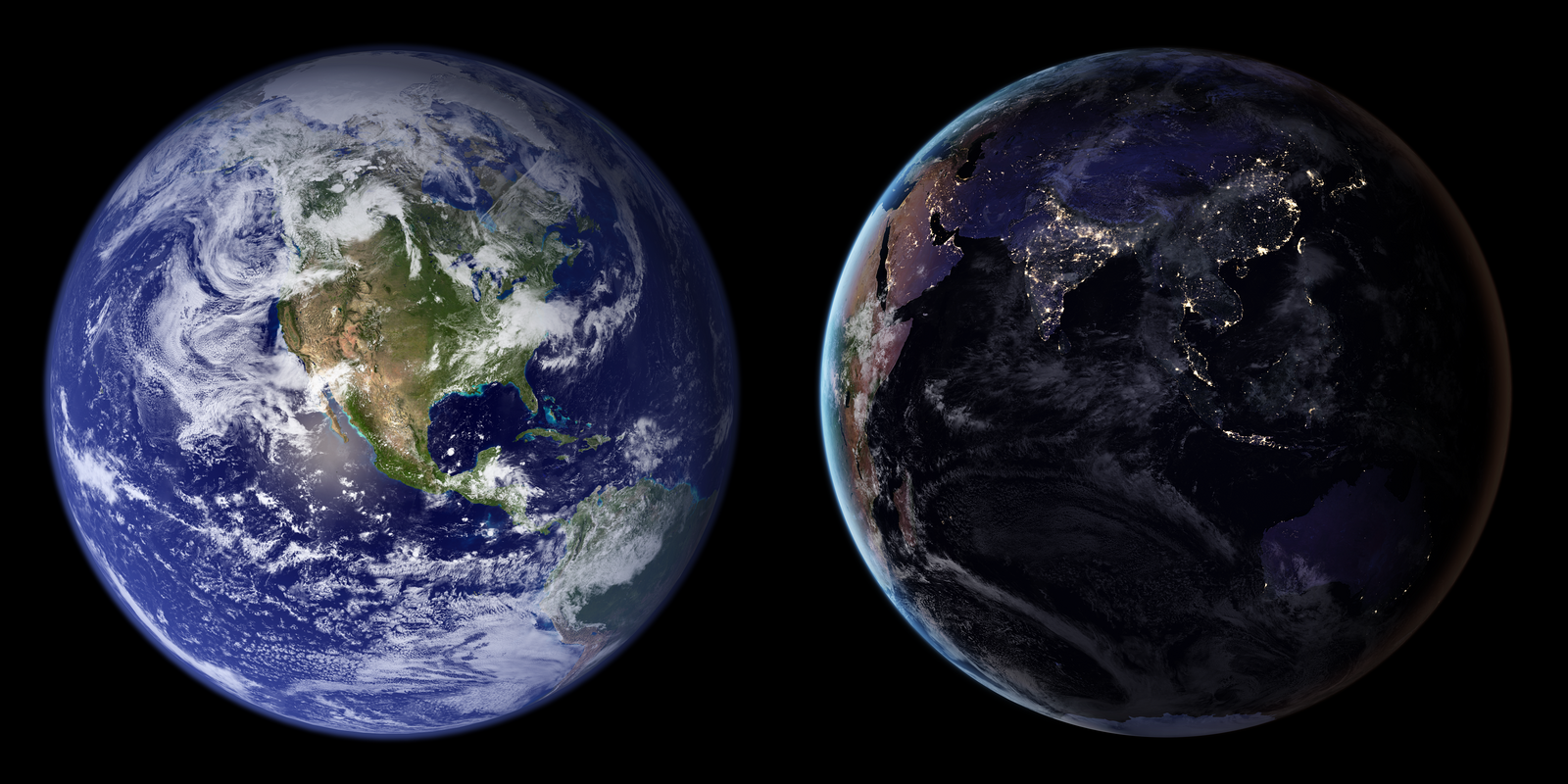Consider two terminals of American architecture, one positive, one negative, in an epicenter of global capital streams: a colossus and a void. The colossus rises from the harbor at the metropolis’s Southern pole; the void is cloaked as a helical shell at the edge of a park to the North. Both operate as conductors, waystations in an immense circuit of goods and services. The statue attracts the laborers and potential citizens from across the globe who will fuel the circuitry; the museum channels illustrious artifacts of that economy’s glut in privileged zones of operation. One of these monuments is a public figure financed by collective fundraising efforts in two countries, the other an amphitheater for the edifying fruits of private enterprise rendered accessible to the citizenry out of generosity, with the mission of enlightening the public. Icons of American politics and cultural affairs—the promise of US citizenship taking the form of liberty and a strike-it-rich fantasy—these New York landmarks were nevertheless forged by global flows: by exploitation of the elsewhere. Both were built by copper. Liberty’s legendary skin is constituted by 62,000 pounds of it, the amount in thirty million copper pennies, or 1,771,429 iPhone 5s; the Guggenheim testifies to a family’s countless millions derived through copper’s extraction and capitalization from afar.
The Statue was the brainchild of Édouard de Laboulaye, poet, jurist, president of the French Anti-Slavery Society, and professor of comparative law at the Collège de France with a novel specialization in the United States Constitution, who spent his career advocating for the return of democracy to France.1 Laboulaye first proposed the idea of a monumental gift to the United States in 1865—in the midst of the political oppression of the Second Empire, extending from France to the colonies (which doubled in extent in this period); the monument was strategized to celebrate the centennial success of the US as constitutional republic, honoring the victory of the Union in the Civil War and the attendant passage of the Thirteenth Amendment abolishing slavery. By 1871, when the Third Republic was established upon Napoléon III’s defeat by Prussia, Laboulaye had teamed up definitively with Frédéric-Auguste Bartholdi, an ambitious sculptor who had traveled to Egypt and unsuccessfully campaigned to produce a Rhodes-like colossus at the Suez Canal under the title “Egypt (or Progress) Brings Light to Asia,” thereby glorifying a private French enterprise built by thousands of Egyptian forced laborers.2 A reincarnation of the Roman Libertas, their sculpture would concretize an ideal bond between two effectively tenuous and imperfect republics—a bond that, conjured on such a colossal scale, might even have brought constitutional democracy to post-revolutionary France.3 Laboulaye and Bartholdi’s project held out the promise not merely of an alliance between two would-be democratic nations, but of worldwide enlightenment: “on the threshold of the continent so full of a new life—where vessels from all parts of the world are constantly passing,” the sculptor intoned, “it will rise from the bosom of the wave and represent ‘Liberty Enlightening the World.’”4
The frontispiece to a pamphlet describing the Statue written by Bartholdi and generated to raise funds contains an 1885 autograph contributed to the text by the dying Victor Hugo: “La forme áu statuaire est tout, et ce n’est rien; Ce n’est sans l’esprit, c’est tout avec l’idée” (“Form to the sculptor is all and yet nothing. It is nothing without the spirit; with the idea it is everything.”)5 How does the monument’s significance change if we read against the grain of this pronouncement by France’s illustrious Romantic, whose ideological inconsistencies led him to oppose the death penalty, for example, but not slavery, or France’s colonial atrocities in Algeria? What if we instead consider the material of composition as it precedes ideological projections, and that material’s shaping, as determinant—as “everything”—and the spirit or idea that which roves capriciously according to whims of governance and the shifting perspectives of the citizenry? What is revealed if we dig up the fundament of form in the material sense, excavating its underpinnings in earth and labor, and take as literal the quest to enlighten the world that characterized the last century of US enterprise, paving the way for its ascendancy?
The copper of Liberty’s facture, like the technological miracle of its structural engineering, testifies to worldly circuits of crucial importance to the development of the long twentieth and twenty-first centuries. In 1904, Sandford Fleming would articulate the importance of the projected system of Pan-Brittanic cables and telegraphs stringing subject nations “like jewels on an epoch-making electric girdle.” “All British subjects throughout the world will be kinsmen in the truest sense; trade and commerce will be aided; the Empire will be strengthened in all its parts and made mutually helpful; … and this world-wide union of commonwealths will become more and more a civilizing agency making always for the peace of the world and the welfare of mankind.”6 Though articulated through the imperial design of the US’s former sovereign, this statement anticipates a panorama applying in equal measure to the globally dispersed territories to be bound through resource extraction by American barons of the Gilded Age, who would swiftly come to dominate the copper industry that laid the foundations for this worldwide telecommunicative union. Fleming’s baldly imperialist “girdle” also brings out the way that contemporary networks, as extensions of historical copper cabling infrastructure, manifest what Tung Hui-Hu identifies as “a reemergence of sovereign power within the realm of data,” despite their decentralized and apparently ethereal and democratic nature.7 Overtly advertising the constitutional value of US citizenship, the allegory of Liberty Enlightening the World that rose in New York Harbor simultaneously vaunts as matter, as weathered verdigris skin, the eclipsed substructure of the global village. By tracking the origins and ramifications of this substructure we can decrypt the expression of a wayside, leaching citizenship of extraterritorial reach—and drastically uneven beneficence.
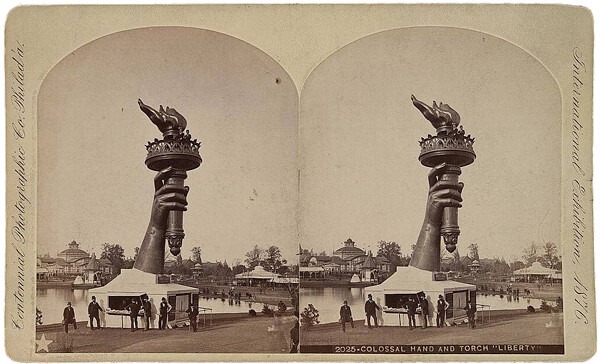

Stereograph of the Statue of Liberty’s hand installed at the 1876 Philadelphia Centennial Exhibition. Source: Library of Congress.
The sculpting of Liberty Enlightening the World was envisioned as a gift of the French people (not the French government), and US citizens were asked in turn to fund its pedestal. The fabricators took advantage of the optimism of two World’s Fairs, each following a national trauma (the Civil and Franco-Prussian wars), to generate interest and further the cause: Liberty’s torch-wielding hand was displayed at Philadelphia’s 1876 Centennial Exhibition, while her head and shoulders were featured at Paris’s Universal Exposition of 1878, an event the brothers Goncourt described dryly as a “Babel of industry … inundated with people collected to celebrate the fraternizing of the Universe.”8 Beginning in 1875, Laboulaye raised funds for the statue through elaborate banquets aimed at politicians, journalists, artists, and descendants of French heroes of the American revolution, a popular lottery authorized by the French government, and the sale of models and promotional photographs, eventually drawing more than one hundred thousand subscribers.9 Despite campaigns ranging from collection of schoolchildren’s pennies to a promotional auction, success to the pedestal fundraising efforts in the US was harder to muster; it came only after a latebreaking harangue by Joseph Pulitzer in his newspaper the New York World, which raised over $100,000 in an act now recognized as one of the first examples of crowdfunding in this country: “The $250,000 that the making of the Statue cost was paid in by the masses of the French people,” Pulitzer petitioned; “It is not a gift from the millionaires of France to the millionaires of America, but a gift of the whole people of France to the whole people of America.” Eighty percent of the resultant contributions amounted to less than one dollar each.10 Despite the extensive popular funding on both continents, the most crucial donation to Liberty Enlightening the World hailed from one of the world’s leading industrialists: Pierre-Eugène Secrétan, who owned a major mill in Sérifontaine, France, and donated all the copper for a sculpture that represented the single most massive deployment of the metal at that time.11
In seeking a medium and an engineering solution through which to build his colossus, Bartholdi approached the well-known decorative metal specialists Gaget, Gauthier & Co., who had constructed the dome for Paris’s new opera house and statues for the spires of Notre Dame and Sainte-Chapelle; they were experienced in the use of copper, a malleable and lightweight material capable of being sculpted in France and transported across the Atlantic for reassembly. The foundry was particularly skilled in repoussé, a laborious millennia-old technique requiring the hammering of copper sheeting into molds. For structural engineering Bartholdi consulted Eugène Viollet-le-Duc, who advised that copper sheets be hammered into a wooden framework and joined through armature bars.12 Upon Viollet-le-Duc’s unexpected death in 1879, Gustave Eiffel took over. Eiffel retained the plan for the sculpting and connection of the skin, but modernized the internal trusswork by deploying a central iron pylon—foreshadowing that of his 1887–89 Tower—and a secondary armature to bridge skin and frame. The skin would be beaten by hand into sections of a wooden skeleton to a final thickness measuring less than that of two pennies. It would then be secured with copper saddles to the puddled iron armature using 300,000 copper rivets, forming an early example of curtain-wall construction. A double helix of stairs rose at the monument’s core. The 300-odd pieces were assembled in the 17th Arrondissement of Paris in 1884 before disassembly and shipment to Bedloe’s Island in New York Harbor.
At his inaugural fundraising banquet for the Franco-American Union, Laboulaye made a fascinating claim about the material that was to constitute the 151-foot statue: this Liberty would not resemble “ces colosses de bronze si vantés, et dont on raconte toujours avec orgueil qu’ils ont été coulés avec des canons pris sur l’ennemi” (“those bronze colossi ever boasted to have been cast from cannons taken from the enemy”)—“sad” monuments recalling “le sang verse, les larmes des meres, les maledictions des orphelins” (“spilled blood, mothers’ tears, the curses of orphans”). Instead, it would be wrought of “cuivre vierge, fruit du travail et de la paix” (“virgin copper, the fruit of labor and of peace”).13 This was a beautiful idea that drew upon the contrast between copper and bronze, its alloy normally used for both monuments and field artillery. Laboulaye’s boast is based on the fact that copper is one of the few metallic elements to appear in nature in “native,” or pure form—though it glosses over the fact that copper more typically occurs in oxidized states, mixed with other elements, and thereby requiring chemical purification. That the material used for Laboulaye’s allegory of Liberty would be untampered with on a chemical level, the result of honest skilled manual labor in a time of peace, bespoke a selective and ultimately impossible ideal of purity in origins, sincerity in construction, and pacificity in deployment. At the time, “virgin” copper was still available for mining in a few areas of the globe through shafts sunk to follow native copper lodes. In the twenty-first century it is all but depleted, like the immaculate form of citizenship this metal was supposed to constitute. It is now far more economical to mine lower-grade copper minerals by blasting large quantities of rock and purifying them by chemical means to forge the metal that has only sunk itself more profoundly into contemporary technologized foundations of labor and social relations. Yet even the processing of native copper requires milling and smelting, or the extraction of minerals from the ore: operations that yield not only copper, but mountains of poor (waste) rock, stamp sands (crushed waste rock), slag (molten waste rock), and particulates from furnace smokestacks containing potentially hazardous levels of trace metals such as lead and arsenic that, while wholly detached from any salutary allegory of citizenship, are released into the refinement-hosting environment, often irremediably.14
Laboulaye’s bold claim for the laboring of a virgin material begs the question of where the copper in Liberty Enlightening the World actually came from, and what sort of “native” it is. Yet the Statue’s mineral genealogy is shrouded in myth to an even greater extent than its ideological underpinnings. Documentation of the exact source of the donated copper was lost in a fire, giving way to numerous global claims on its origins. Norwegians have held as tradition that the copper came from Vigsnes Mining Field, on the island of Karmøy, given that at the time it was owned by a French company that shipped the ore to Belgium. Meanwhile, Nizhny Tagil, a remote monocity in the Urals developed for mining and metallurgy, still clings from a reality of smokestacks, smog, and pervasive illness to the idea that their region provided the ore, technology, and labor power for the Statue.15 Secrétan’s commercial and industrial relations suggest otherwise. By the late 1870s, the benefactor owned native copper mines on Michigan’s Upper Peninsula and in Corocoro, Bolivia, and purchased most of his copper in London, maintaining a close relationship with the British Rio Tinto company, which was named after its founding mine in southwestern Spain and operated in the Chilean Andes.16 Analyses of impurities in the Statue skin via two samples suggest that the copper used in the upper portion of the statue, rich in arsenic, could have come from Spain or the Lake Superior mining district, and that that of the lower portion, containing selenium and tellurium, could have its source in the Rocky Mountains of Montana or the Andes. It also suggests that these minerals were subject to different types of processing, meaning that the byproducts of milling and purification for the Statue are lingering in more than one industrial waystation on earth.17 The transnational network of copper production, with its labyrinthine chains of responsibility and irresponsibility, produces and invites this ambiguity of origins as it buries genealogies of extraction in favor of seamless corporate branding at home. Along the way, copper “exploitation,” as it is conventionally called, confuses notions of jus soli (right of soil) and jus sanguinis (right of blood) that form the bases of citizenship law. The circuitry, or short-circuitry, of extraction economies defies the most apparently inalienable ties of birthright to land: when the extraterritorial interests of capital begin to lay claim to zones of copper bonanzas at home and abroad, the “natives” of a place are often divested of the rights to the soil beneath their feet. That soil is then churned beyond recognition, and the so-called “overburden” (material deemed uncapitalizable) is unleashed into the air and water table that enters the local bloodstream. As articulated by Municipal Judge Neil V. Reynolds, a fifth-generation resident of Leadville, Colorado, the town where Marshall Field, Charles H. Dow, and the Guggenheims made their millions, “Mining is a community of occupation, not a community of place.”18
Few would have witnessed the tactical fabrication of the American ideal that was unfolding in Bartholdi’s atelier, the foundry, Secrétan’s mill, or the mines at first hand, but citizens of both Paris and New York who watched the allegory riveted together in bright copper pieces would have been aware of the lofty and even imperious undertaking it represented. Liberty’s chunks were not to be seen again in their original copper cast and portable, fragmentary form until a century later, when Vietnamese-Danish artist Danh Vō outsourced the statue’s full-scale replication in some 250 pieces to artisans at a foundry near Shanghai, and installed them under the name We the People (detail) (2011–16) in museums and public spaces around the world, from Bangkok to Barcelona, Beijing, Chicago, Ghent, Kassel, New York, and Paris. As title, Vō’s fractured allegory of liberty breaks off the first three words of the preamble to the US Constitution: “We the People of the United States, in Order to form a more perfect Union, establish Justice, insure domestic Tranquility, provide for the common defence, promote the general Welfare, and secure the Blessings of Liberty to ourselves and our Posterity.” Detaching “We the People” from “the United States” and redistributing pieces of the Statue seems to re-channel the “Blessings of Liberty” toward the people of the entire world. Yet Vō’s unwieldy wreckage-like hunks also conjure Liberty’s occupation of spaces beyond the margins of this national Constitution, concretizing the uneven and potentially violent global distribution of US national interests under contemporary political economies of trade and war. Liberty’s is an occupation requiring natural resources offshore, in which, as Eduardo Galeano puts it in The Open Veins of Latin America, “As lungs need air, so the US economy needs Latin American minerals… Bullets are needed to kill Vietnamese, and bullets need copper.”19 While it summons these assumptions of contemporary political economy, Vō’s installation simultaneously brings out the splintered and disproportionately acknowledged status of “the people” and its rights at the time of the monument’s conception. The Statue, after all, celebrates the centenary of the United States’ independence from Britain while looking away from the imperialist posture that fostered the colonial constitution of French Indochina in 1887. Moreover, France’s ideal alliance with American freedom had to gloss over the selective denial of citizenship and perpetuation of enslavement by other means within the US and its own otherwise colonized zones.
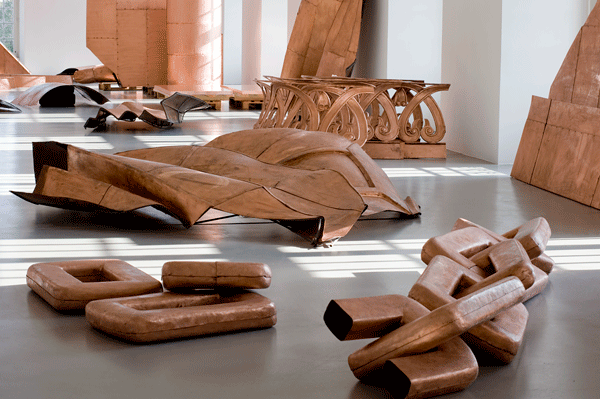

Danh Vō, We The People (detail), 2011–16, exhibition view at Fridericianum, Kassel (2011). Photo: Nils Klinger.
Not all would-be citizens at home were ready to celebrate the allegory of Liberty’s achievement or potential once the Statue reached American soil. Suffragettes aboard a boat in the harbor on the day of the 1886 inauguration protested against the hypocrisy of erecting a female allegory for liberty, when women were excluded from core inalienable rights promised by the Declaration of Independence whose adoption date is inscribed on the tablet cradled in her arm. A July 1885 editorial of the African American weekly The Cleveland Gazette had called for the torch to remain unlit until freedom should become a reality within the country: “This government is a howling farce. It can not or rather does not protect the rights of the citizens within its own borders… The idea of the ‘liberty’ of this country, ‘enlightening the world,’ or even Patagonia, is ridiculous in the extreme.”20 The editors’ reference to newly conquered indigenous South American lands might have been meant as offhand irony, but in literal terms, it was less ridiculous than intended for the Statue to signify the enlightenment of undeveloped South America—a region of the globe rich in mineral ore essential to electrification, and increasingly in demand.
An inverse irony accompanied the eclipsing of the Statue’s allegorical intention by its technical features: due to the late arrival of Bartholdi’s torch at the Philadelphia Centennial, it was not included in the fair guide, and its intended symbolism was lost, with some programs mistakenly identifying it as “Bartholdi’s Electric Light” rather than a means of figurative enlightenment.21 This putative error, too, expressed an emphatic material actuality, exposing the relation between the statue’s composition and copper’s place in the booms, busts, and attendant promises and ravages of transnational modernity. The monument did comprise a novel electrical system: floodlights were installed inside the torch and an innovative illumination system made provisions for Liberty’s floodlighting from below, with the American Electric Manufacturing Company donating a dynamo and other lighting equipment as a patriotic gesture. The Statue’s torch, rising 305 feet above sea level, contained nine electric arc lamps that were entrusted to aid navigation, though in practice, they were barely visible from across the harbor. Nevertheless, the Statue was instated as an active lighthouse until 1902.
A 1950s advertisement featuring an artist’s rendering of the Statue for the Anaconda Copper Mining Company—one of the largest trusts of the early twentieth century and then-owner of the largest mine in the world at Chuquicamata, in the foothills of the Chilean Andes, which was acquired from the Guggenheims in 1923—impeccably articulates the bond between copper, technology, and a prototypically American concept of liberty as it reads:
COPPER…
Friend of freedomIt is symbolically proper and fitting that the Statue of Liberty should be completely clad in copper.
For copper is, like Liberty herself, a proud symbol of our free and better way of life.
Copper brings us the electricity that frees us from the toil and drudgery of farm and factory—from darkness in the night. It pipes warmth and water through millions of our homes—helps to join our far-flung nation through magic networks of communication and transportation.
And the versatility of copper and its alloys, brass and bronze, has helped strengthen our economic freedom, too. For these shining metals have enabled industry to manufacture so abundantly that the luxuries of life yesterday are considered necessities today.
Anaconda, with the leading name in copper, brass and bronze, works unceasingly at developing new sources. For tomorrow’s better way of life—tomorrow’s freedom, too—may well depend on copper.
The advertisement’s unspecified yet unmistakably American first person plural boasts that Anaconda is a leading force in forging the unity, necessities, leisure, and even the freedom that characterize the US way of life—its enlightenment—while the text upholds assorted ambiguities. “Our far-flung nation” can be read as a nation either distributed over a vast terrain or geographically remote, “joined” by copper to other parts of itself or to others through “magic” networks of transit and exchange. Previously untapped ores are to be prospected, not invented, but the phrase “developing new sources” suggests that they can be created, homespun. The principal elision in this passage, however, is the swapping of political freedom for freedom from labor in “farm and factory,” leading the reader to realize that “we” are not part of the class or race that mines, processes, or mills the copper here or abroad, nor of the group that toils to manufacture, install, or service pipes, cables, wires, switches, cathodes, motors, motherboards, and dozens of other applications of this modern conductor.
“Tomorrow’s freedom,” interjected vaguely into a sentence about lifestyle between em-dashes, may well depend on copper due to the red metal’s strategic and military value as well. This value would have been more palpable in the preceding decades of world conflict, as the names of publications like Copper Commando (the official newspaper of the Victory Labor-Management Committees of Anaconda and its Union representatives) suggest. As we pore through the archive, we find the military value that was anathema to Laboulaye’s colossal vision yoked to the copper industry by the fate of poet, labor leader, and anti-war International Workers of the World activist Frank Little, lynched outside of Butte, Montana while organizing a strike against Anaconda at the dawn of World War I. We confront it again in an alarmingly xenophobic 1942 billboard installed at Anaconda’s Butte operations tallying the number of employees absent from war production.22
While a US-bred Liberty’s enlightenment of the world is easily discernible on a purely technical level, it remains unclear from the Anaconda advertisement who exactly will be the beneficiaries of “tomorrow’s better way of life.” For copper miners themselves, electricity meant better ventilation and lighting underground, but also carried the risk of electrocution. It meant less manual effort in excavation, but more hazards resulting from the use of mechanical drills, including tunnel collapse and silicosis (the disease behind the tools’ nickname, “widowmakers”). And in the long run, it meant a diminished workforce as shovels took the place of men. For eventually the higher-grade ore in the tunnels they blasted would be depleted, the costs of shaft mining would increase, and soon enough copper prices would fall with demand as well as spike. Anaconda, owned by the French and British Rothschilds and the Rockefellers, managed to safeguard profits in the first half of the century by union-quashing and controlling its unprotected immigrant workforce with an iron fist. In the postwar years demand for copper dropped, and to reduce costs and cut losses, the company started mining at Butte Hill in 1955 through an open pit. The resultant “Berkeley Pit,” a defunct mine which plunges to a depth of 1,780 feet filling gradually with acidic water—the result of displacing one billion tons of rock, roughly a third of which was ore—has lain fallow since 1982 but for the two dollars’ viewing fee paid by each morbidly curious tourist. The Anaconda Copper Mining Company now exists only as an immense environmental liability for the Andeavor Corporation in the form of the nation’s largest Superfund site. (Or not, given an announcement by the Trump administration of December 1, 2017 that it will not require hard-rock mining companies to prove they have the financial resources to clean up their pollution.)23 The benefits of Liberty continue to trickle down and outward through sulfuric acid and copper, cadmium, zinc, lead, and arsenic released by the decomposing ore and nearby smelter waste into the air and Clark Fork River Basin.
Meanwhile, beyond home, Anaconda’s all-important Chilean holdings would be seized when the democratically elected Socialist Salvador Allende nationalized Chilean mines in 1971, only to be compensated for once the US-backed Pinochet dictatorship ended civilian rule soon thereafter, and the “Chicago Boys” of Latin America instated policies of deregulation, privatization, and overall economic liberalization.24 Citizenship continues its leaching—beyond Liberty’s borders.
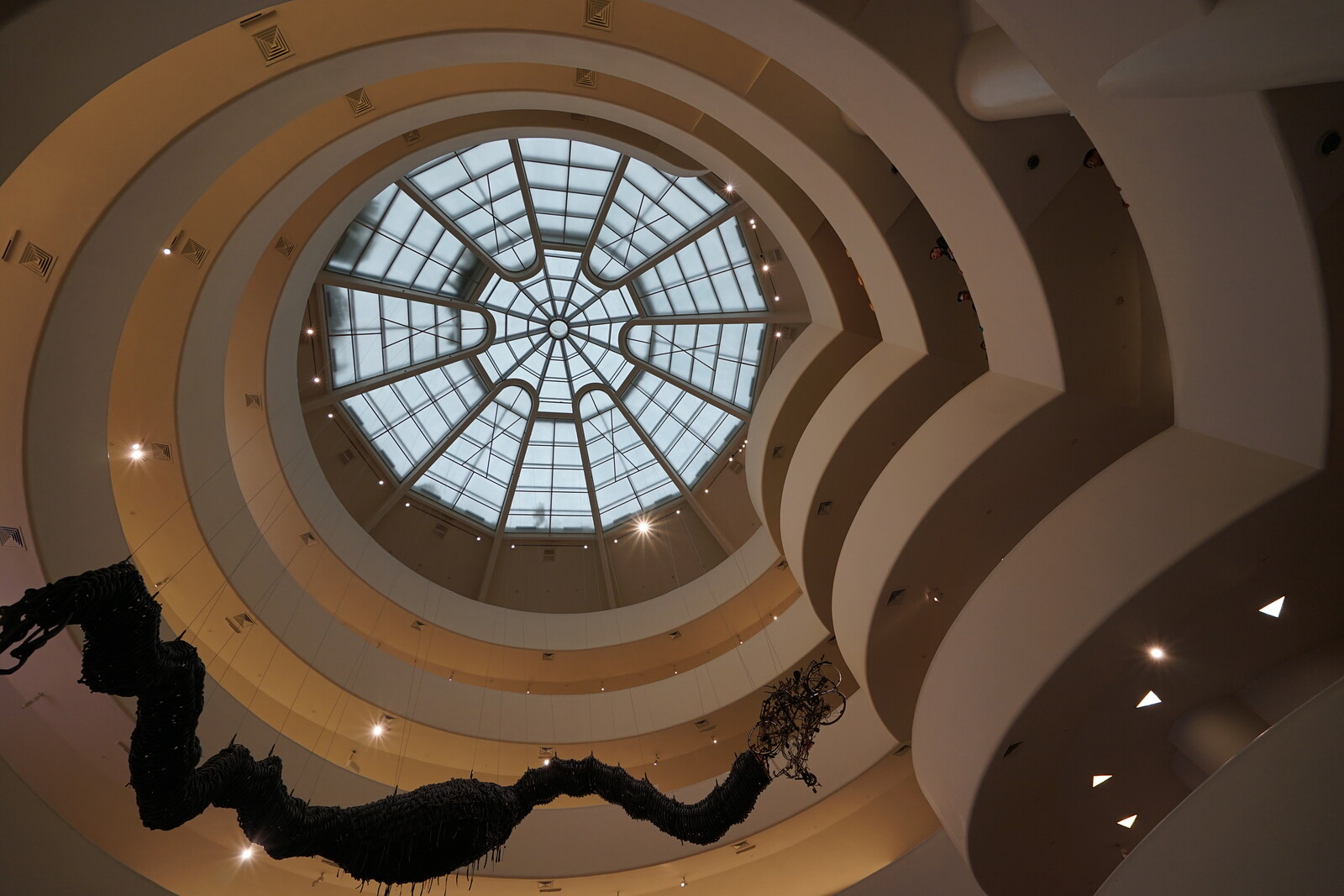
Interior view of Solomon R. Guggenheim Museum, January 8, 2018. Photo: Michael Waters.
_-_Google_Art_Project_-_edited.jpg,1600)
Pieter Brueghel the Elder, The (Great) Tower of Babel, oil on panel, c. 1563, Kunsthistorisches Museum, Vienna. Source: Wikimedia Commons.
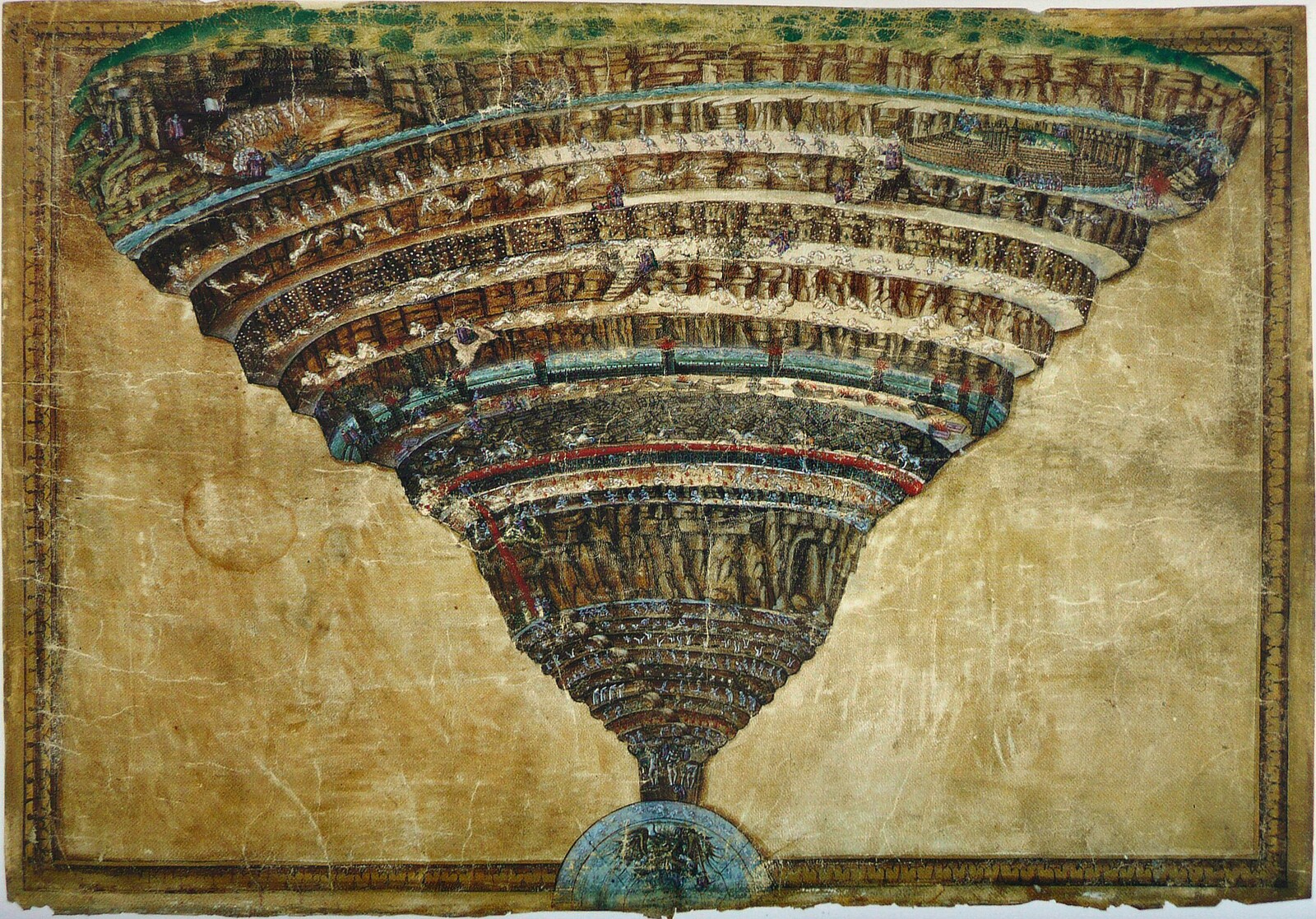
Sandro Botticelli, Map of Hell. Pen and brush on vellum (32 x 47 cm), dated c. 1485. Vatican Library, Rome. Source: Creative Commons.
Interior view of Solomon R. Guggenheim Museum, January 8, 2018. Photo: Michael Waters.
Downward Babel
There are various ways of understanding the helical shell of the Solomon R. Guggenheim Museum at the other end of New York City, the product of sixteen years of design on the part of Frank Lloyd Wright and his collaborators. Hilla Rebay, the visionary curator and consultant who proposed the commission to Wright in 1943, called for a “Temple of Peace” to house Solomon Guggenheim’s founding collection of Non-Objective Painting, which she regarded as the expression of a universal language with the promise of uniting nations.25 Wright himself described the building as an “optimistic ziggurat,” overturning the pyramid. Tracking Wright’s gradual development of spiral forms based on the idea of a “fabulous Tower of Babylon” as pictured by early modern artists such as Pieter Brueghel the Elder, Neil Levine develops a reading of the museum as an inverted, hollowed out Tower of Babel.26 The myth of Babel invokes both the striving to unite humankind and that aspiration’s punishment by dispersion; Nico Israel’s study of spirals reads this geometrical form by extension as the sign of “a nascent world picture.”27 The spiral form gave rise to renowned self-consciously international designs at the dawn of modernity that would attempt to reverse the cultural scattering and linguistic confoundment recounted by Genesis, composing instead a force field of communal striving and progress: Vladimir Tatlin’s revolutionary 1919–20 Monument for the Third International, and Le Corbusier’s 1928–29 Musée Mondial, part of a utopian Mondaneum to be built in conjunction with the League of Nations. In the years leading up to the Great War, Daniel Guggenheim, chairman and president of American Smelting and Refining and chief operating partner of Guggenheim Brothers, understood how important his family’s control of copper would be to global conflict; he strategically joined the hawkish National Security League, an association in favor of military preparedness founded in 1914, which served as the chief motor for the entry of a then-neutral US into World War I. Yet Wright’s museum project would germinate in the postwar moment when the Guggenheims, who emerged from World War I with a net worth in the neighborhood of 250–300 million dollars, could retire from the front lines of the war business: when the United Nations headquarters was being constructed, as the dawning notion of world governance called for a visionary new architecture.
The material source of the wealth that erected this memorial museum to Solomon Guggenheim bears a startlingly precise resemblance to its apotheosis as an integrative temple to the arts. The extraordinary riches of Meyer Guggenheim and sons hailed in substantial part from Daniel Guggenheim’s turn-of-the-century decision to invest in new technologies surrounding open-pit mines: those terraced spiral craters pointing in Dantesque fashion toward “lo mezzo / al quale ogne gravezza si rauna” (“the center toward which each graveness is drawn”).28 From 1891 to 1901, the Guggenheims engaged in a struggle with the Rockefellers over the American Smelting and Mining Company (ASARCO), eventually winning control of one of the first transnational corporations for two critical decades of copper production, while expanding ever outward through the family’s distinct and lavishly financed assayings in other undeveloped territories at the edges of the continent and abroad.29 The spread of open-pit copper mining depended on the development of gigantic mechanical shovels running on tracks along the corkscrew “benches” of the trench and on new refinement techniques, making it possible to excavate and purify immense quantities of ore at a low cost—but only after colossal initial investments in infrastructure. These investments, possible only for the super-rich, included the construction and coal fueling of mills and smelters in strategic territories like the US-Mexico border at El Paso, and of railways, ports, steamship lines, aqueducts, electrical power plants, and company towns from which to excavate in the remoteness of Alaska’s Kennicott Glacier or Chile’s Northern Atacama Desert. Open-pit mining was a key spur in the Guggenheims’ definitive evolution from traders of pastoral European commodities to the leading finance capitalists in the world’s metal market, controlling over two-thirds of the world’s copper, silver, and lead by the beginning of the Great War. Open-pit operations cemented the Guggenheims’ position as patriarchs of the copper industry in the critical decades of electrification at the turn of the twentieth century, which not only bolstered US war efforts in the form of cables and arms, but paved the way for the systems of mass illumination, the automotive and aerospace industries, and the radio, telephony, and eventual wireless networks at the core of virtually every modern industry.
The Guggenheims initially built their transnational empire through smelting—and specifically by processing cheap, low-grade materials en masse, rather than through the ownership and management of mines (a far riskier business). As Isaac Marcosson details in his boosterish history of ASARCO, Metal Magic, Daniel Guggenheim teamed up with metallurgist Daniel Jackling, who pioneered the exploitation of porphyry ores containing as little as two percent copper content at the Bingham Canyon Mine in Utah. Jackling introduced a process called “concentrating,” in which crushed ore is floated on water and sulfuric acid to separate copper minerals from material regarded as waste. Smelting then extracts copper from these minerals, and refining purifies the metal. ASARCO accordingly built what would become the largest smelter in the world at Garfield, Utah, on the banks of the Great Salt Lake. Such technical advancements turned Bingham into the first open-pit and largest copper operation in the world, especially when combined with an exploited workforce of immigrants representing twenty-four national groups. These groups included unskilled and un-unionized, yet militantly organized Japanese, Italian, and Greek “muckers” who were needed to lay rail tracks for shovels in the pit and unload ore at the smelter, who finally revolted over deplorable conditions via strike and guerrilla warfare against the Utah Copper Company and the Utah state militia in 1912.30 The open-pit technique spread from Bingham to Kennecott in the newly purchased Alaskan territory that Guggenheims colonized with J.P. Morgan, and to the Chilean Desert at Chuquicamata, an immensely rich terrain once mined by the Incas, which the Guggenheims were able to acquire via the Bingham bonanza in 1913. The lasting importance of Chuquicamata’s purchase and sale is visible within the offices of the Guggenheims’ most recent venture, Guggenheim Partners, a financial services firm founded by Solomon’s great-grandson Peter Lawson-Johnston II in 1999. There, a bar of copper from Chuquicamata commemorating the opening of operations in 1915 and a 1923 check for $70 million selling two million shares of the Chile Copper Company to the Anaconda Copper Mining Company, the largest in history at the time, sit exhibited as trophies.31 The hole in the ground at Chuqui, as it is called locally, is presently deeper than the tallest building on earth, the Burj Khalifa in Dubai, is high. Surface or open-pit mining has since eclipsed the traditional shaft and tunnel mining that would have yielded the copper for Liberty Enlightening the World, a somewhat less deleterious, covert endeavor based on the risky prospect of excavating along what scarce rich mineral deposits remain unexploited underground. Jackling and the Guggenheims emerge as legendary pioneers, even revolutionaries, in the transformation of mining into a calamitously destructive, yet paradoxically stable long-term business with far-reaching consequences for modern industrial society. Under this regime, “Mines are more often made than discovered,” as Jackling averred.32 They no longer need to be contained by the limits established by veins of ore.
Wright’s museum thus memorializes not only Solomon R. Guggenheim, but the model of resource extraction on a novel border-blasting scale that built his family fortune. It concretizes the material unconscious of this illustrious bequest, and forces us to contend with the social implications of its revolutionary form. In a 1912 essay, Wright described the circle as a representation of infinity, and the spiral in terms of its Romantic conception, as “organic progress.”33 For Hilla Rebay, Guggenheim’s purchased Non-Objective paintings were “sensitive (and corrective even) to space,” representing the promise of transcendence from the materialistic to the spiritual: “We are merely tunnels through which the spiritual must pass,” she wrote in the first collection catalogue of 1936.34 The white cast of the Solomon R. Guggenheim Museum suggests spiritual transcendence of this order, but this was not part of Wright’s design; the architect vigorously resisted the solution to “whitewash” the museum that was imposed on him by James Johnson Sweeney late in the process, having projected a marble aggregate in rose with white veins, and at other points a marble alternating with verdigris copper—lamenting that white paint would make the building resemble “the toilets of the Racquet Club.”35 One can imagine the original pigmentation, in conjunction with the red marble slabs Wright imagined for the ground floor, recalling the monumental copper mines Wright would have known from the Arizona of his Taliesin West. This substantially complicates the interpretation of the building as a means of aesthetically induced spiritual transcendence. Against this backdrop, the building so easily read in terms of abstract geometry emerges instead as the Anthropocene corollary to Fallingwater: a disclosure of its sources in geology. As Immanuel Kant said of Plato’s Republic and metaphysical philosophy’s towering palaces of edification, “under this ground there are all sorts of Maulwurfsgänge (“mole-paths”), all sorts of passageways, such as moles might have dug, left over from reason’s vain but confident treasure hunting, that make every building insecure.”36 Wright’s exemplary cosmic sublimity was predicated on, and should invoke, a destabilizing burrowing into the earth that was strategically blind to its collateral consequences.
Extending the logic of Levine’s inverted Tower of Babel to the history we have thus far traversed, we should regard the eternal progress of Wright’s utopian construction as an eternal spiraling downward rather than heavenward: a tunneling by coils into the earth—or to be more specific, into the porphyry copper deposits formed from hydrothermal fluids in scattered zones of the globe that gave rise to this memorial edifice. Given that the striving to build and unionize by diverse peoples of the world responsible for mining the bedrock of such fortune was repeatedly to be smitten down, scattering them as individual subjects in atomized struggles for life, liberty, and the pursuit of happiness (or, depending upon the founding document one consults, property), the only direction in which these builders were or could have been consummately united was earthward. This vision and the underground history that accompanies it recasts while literalizing Saskia Sassen’s hopeful projection that under globalization, “insofar as the national as container of social process and power is cracked, it opens up possibilities for a geography of politics that links sub-national spaces across borders.”37 The whitewashing of Wright’s realized building and of the Guggenheim heritage whose sources were drawn from the earth’s bowels emerges as a perfect corollary to the purified chronicle of these benefactors and copper kings.
The relationship between Wright’s inverted tower of Babel and the open-pit copper mine as an icon of transnational bonding through resource exploitation and its financing leads to deductions surrounding the reach of citizenship even more elusive and confounding than those implied by the facture of Liberty Enlightening the World. Multinational corporations establish their own colonies and legal regimes that run parallel to state sovereignty, and even dip below it—literally undermining the rights of citizens abroad to the land under their feet. This land is then restored to them in the form of tailings—the result of extracting the valuable from the uneconomic fraction of ore, also known as dumps, slimes, leach residue, slickens, or terra-cone. The Guggenheim sons’ transborder empire expanded from Colorado into Mexico, for instance, under the regime of Porfirio Díaz, who granted them extensive privileges and subsoil rights to the extent that ASARCO eventually became the largest privately-owned business in the country and led to virtual and untaxed “Guggenheim States” in Northern Mexico.38 It’s for this reason that some historians have cast the business practices of the Guggenheims as inciting the Mexican Revolution, though ironically, ASARCO ultimately maintained a relationship of reciprocal favors with Pancho Villa and his men.39 The resolution of Babel via the irrepressible ascendancy of the US language of enterprise was impeccably expressed in Villa’s response when asked whether he knew any English: “‘American Smelting’ y ‘son of bitch.’”
A common defense of multinational investments overseas argues that foreign capital modernizes and thereby improves life for workers abroad. In a 1920 essay on building mining towns in South America, Daniel Guggenheim’s son Harry F. Guggenheim describes achievements of the family business’s “Industrial Democracy” in the upgrading of nineteenth-century-style mining camps at Braden and Chuquicamata, Chile to modern company towns planned by more than thirty hired architects in 1912, and furnished with housing, stores, schools, entertainment spaces, and eventually hospitals and sanitation services—efforts much praised by colleagues in the field who said that these home-making efforts in a desolate part of the country had helped Chileans “in every way to become good citizens.”40 Guggenheim justifies paternalistic strategies of occupation and accompanying “welfare work” through repetition of “the old saw, ‘What is everybody’s business is nobody’s business.’”41 In the Guggenheims’ business, or the branch of it called Chile Copper Co., provisions for the housing and schooling of “natives” must have as foundation “the firm conviction that humanity progresses, that human progress means efficiency, and … that commerce is a means and not the end, that there is only one end—humanity.” And if patriarchs lose sight of these conceptions, “then the welfare movement may become a whirlpool of anarchy … carrying everything with it to destruction.”42 “Natives” responded to these magnanimous claims through reports of conditions on the ground: “Housing is crowded, unsafe, unhealthy, and inadequate… The comfort, decency, and hygiene of the American Camp has not been furnished for the ‘blakman,’ because the Yankee democracy that lynches the Negro son of the Union on their soil has established in Chuqui the division of classes and races… Chuquicamata at present is the cemetery of the race!”43
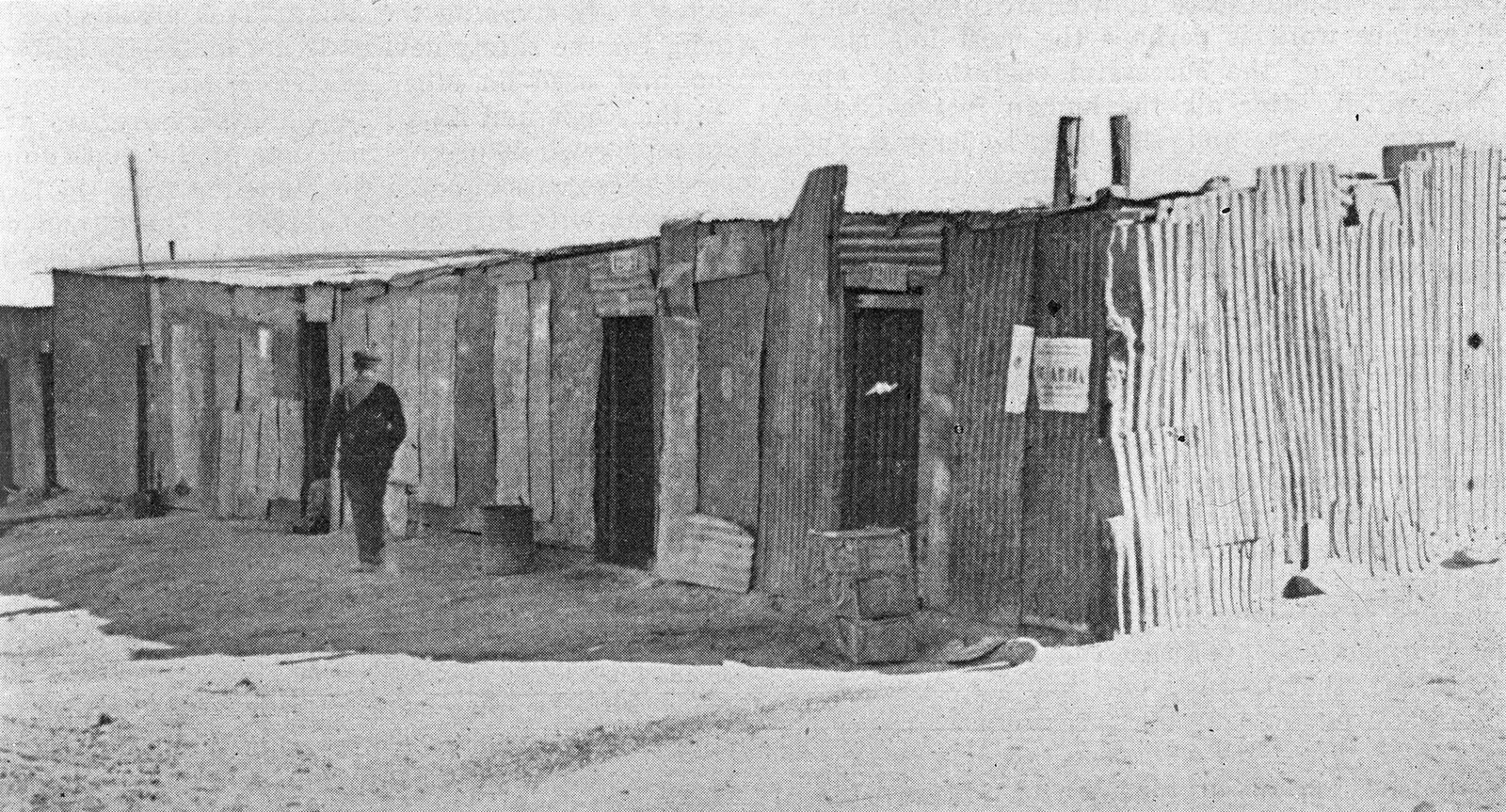
“Native Chilean Homes at Chuquicamata Before Improvements by Americans.” Image from Harry F. Guggenheim, “Building Mining Cities in South America: A Detailed Account of the Social and Industrial Benefits Flowing From the Human Engineering Work of the Chile Exploration Co. and the Braden Copper Co.,” Engineering and Mining Journal 110 (December 1920).
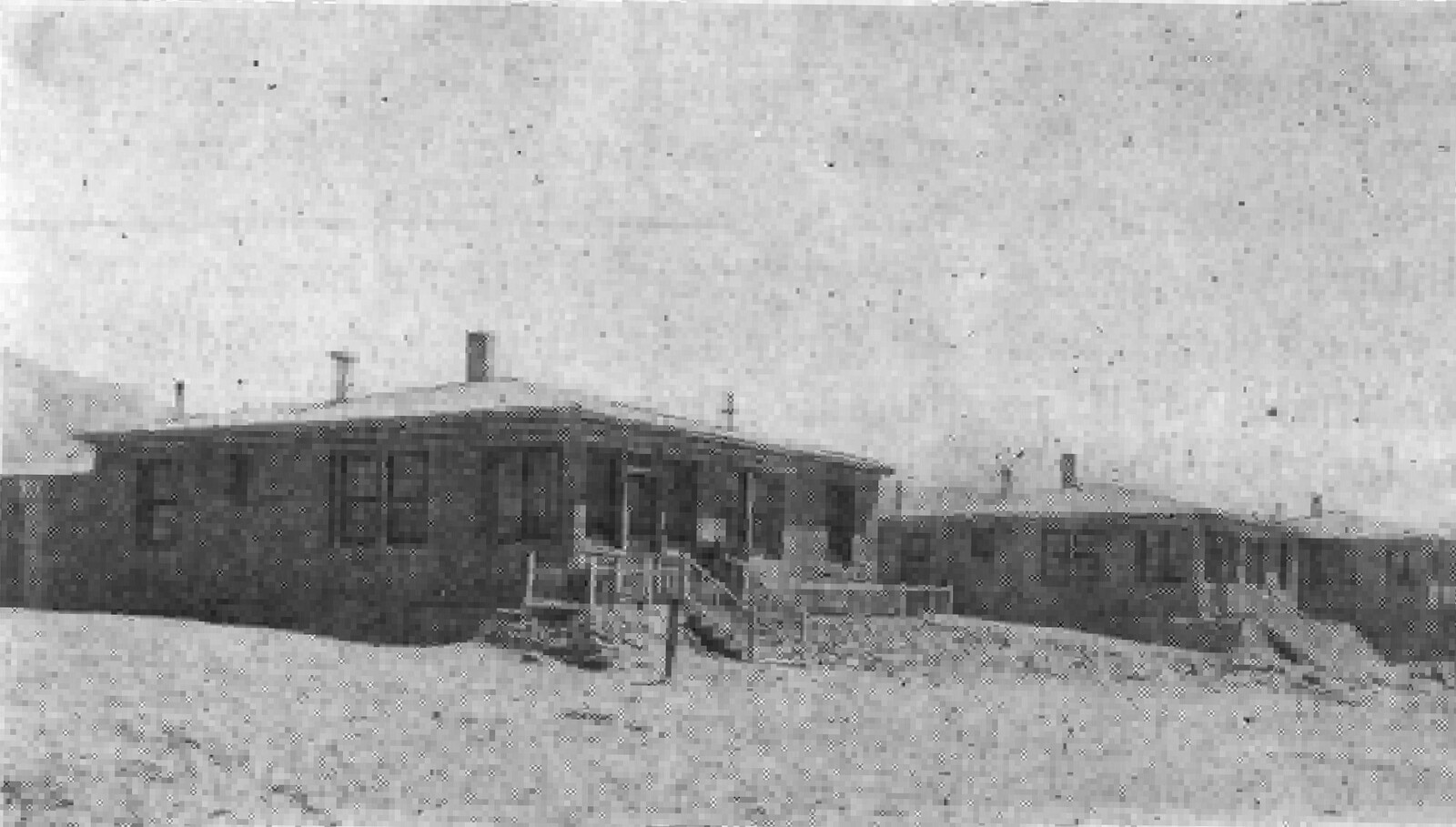
“Type ‘A’ Adobe Houses at Chuquicamata.” Image from Harry F. Guggenheim, “Building Mining Cities in South America: A Detailed Account of the Social and Industrial Benefits Flowing From the Human Engineering Work of the Chile Exploration Co. and the Braden Copper Co.,” Engineering and Mining Journal 110 (December 1920).
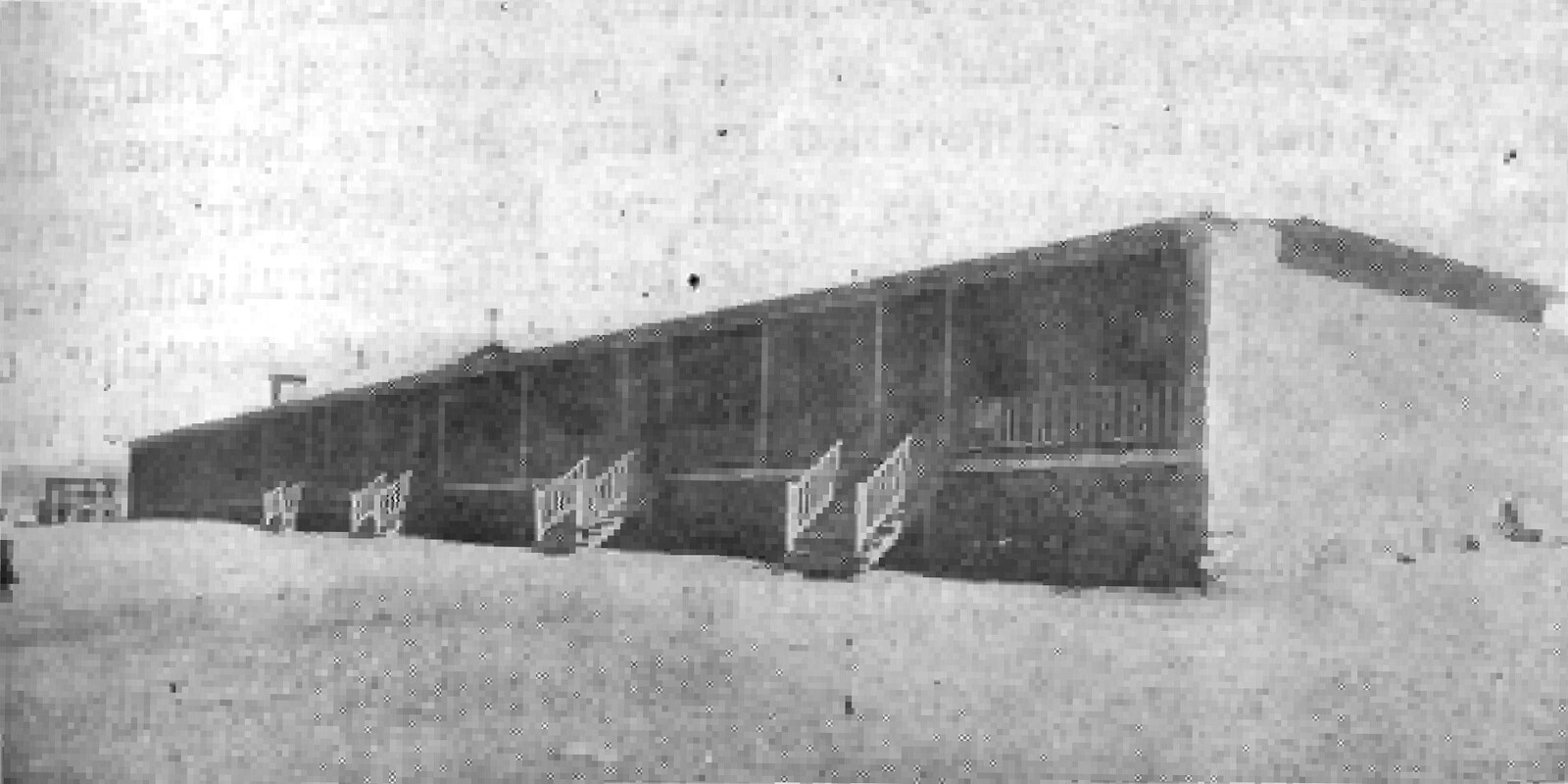
“Type ‘C’ Adobe Houses at Chuquicamata.” Type “C” Houses were “[o]ccupied by high-class native foremen and mechanics” and measured 560 square feet. Image from Harry F. Guggenheim, “Building Mining Cities in South America: A Detailed Account of the Social and Industrial Benefits Flowing From the Human Engineering Work of the Chile Exploration Co. and the Braden Copper Co.,” Engineering and Mining Journal 110 (December 1920).
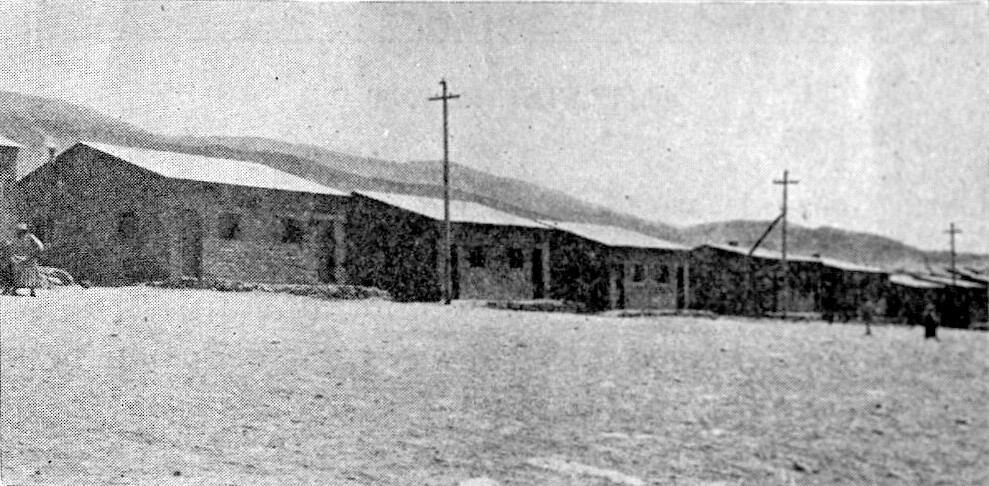
“Adobe Houses at the New Camp.” Image from A.W. Allen, “The Chuquicamata Enterprise—III,” Mining and Scientific Press 123 (July 23, 1921): 120.
“Native Chilean Homes at Chuquicamata Before Improvements by Americans.” Image from Harry F. Guggenheim, “Building Mining Cities in South America: A Detailed Account of the Social and Industrial Benefits Flowing From the Human Engineering Work of the Chile Exploration Co. and the Braden Copper Co.,” Engineering and Mining Journal 110 (December 1920).
Among the progressive yet efficient provisions for humanity of which Guggenheim was most proud was the innovation of manufacturing housing for “natives” at Chuquicamata with adobe bricks manufactured from sifted mining tailings the workers themselves had unearthed—the inevitably toxic residue of blasted waste ore, mixed with small amounts of pampa dust and cement.44 This architectural legacy, enduring for local citizens well beyond the moment of the seventy million dollar check from Anaconda, yet free of consequences for the patriarchs, ought to be considered astride the discussion of architectural masterpieces like the Guggenheim New York.45 The modest adobe tailings home is copper’s spectral monument, made of all that was left out of Wright’s upended Tower: a third edifice for our consideration no longer made of copper, but by copper—from the detritus of the purification process. The Chuquicamata settlement, once home to 30,000 workers, exists now only as a ghost town beside the pit that artist Daniela Rivera refers to as “The Andes Inverted.”46 Because saturation of the water, air, and consumed food by arsenic and sulfur dioxide was too severe for human habitation and meeting stepped-up environmental standards would have made the mine economically unviable, the Corporación Nacional del Cobre de Chile resettled its labor force to the nearest oasis town in 2008.47 Poet Juan de Dios Reyes Franzani described the deadening migration of elements in this landscape in painterly terms:
El verde de las olas tomó el mar
del vaporoso óxido de cobre.
Con sus sulfuros vistió la camanchaca
la mortaja de sus sábanas de azogue.The green of the waves drank the sea
of vaporous copper oxide.
It adorned the cloudbank with its sulfides,
the shroud of its quicksilver sheets.48
The ghosting of these landscapes that are destined to be exhausted by the unbounded demands of development calls not merely for memorials, but for reparations, and at the very least for reclamation, such as the one Robert Smithson imagined in his Bingham Copper Mining Pit—Utah / Reclamation Project: this late project would have constructed a massive revolving platform for the Bingham pit’s base from which to survey the gradual overtaking of industry’s devastating vortex by planted vegetation.


Robert Smithson, Bingham Copper Mining Pit — Utah Reclamation Project, photostat and plastic overlay with wax pencil, 47x34.3cm, 1973. Copy Photography and Copyright © The Metropolitan Museum of Art. Copyright © The Metropolitan Museum of Art. Source: Art Resource, NY.
“After three thousand years of explosion, by means of fragmentary and mechanical technologies, the Western world is imploding,” wrote Marshall McLuhan in 1964, during the period in which he coined the term “global village.” “Today, after more than a century of electric technology, we have extended our central nervous system itself in a global embrace, abolishing both space and time as far as our planet is concerned.”49 Tracking the mineral sourcing of this embrace, which manifests palpably in the wires that lace and extend outward from our own homes, should help us extend and complicate McLuhan’s observation, now half a century old. It should refract the way we talk about global citizenship, pressing us to ask what constitutes such citizenship, spiritually and materially. It should incite us to articulate the political paradoxes that present themselves when jus soli and jus sanguinis are fused in the bodies of those manning the extraction and smelting of “our free and better way of life,” or when both are trumped by the rights of corporate persons. We have become accustomed to witnessing the privileges of citizenship granted to corporations operating transnationally as a default, yet denied to those whose labor nourishes and shelters those same corporations.50
Strangely enough, the Statue of Liberty, in spite of its relatively progressive values for its time, anticipates some of the unfortunate miscarriages of citizenship that we have traced. We can track these through the Statue’s commemoration of the Thirteenth Amendment abolishing slavery, and the amendment that followed to extend rights to the formerly enslaved. Though the term “citizen” appears in the Constitution, it was not defined until the 1868 addition of the Fourteenth Amendment, which described it as pertaining to “All persons born or naturalized in the United States” not possessing foreign allegiance. Formerly enslaved people were not guaranteed full citizenship until this Amendment provided that “No State shall … deprive any person of life, liberty, or property without due process of law; nor deny to any person … the equal protection of the laws.” The fiction of corporate personhood that enables modern and contemporary corporations to behave as though they possessed the rights to life, liberty, and property, and to undermine those of mere natural persons in the process, dates to the year of the Statue’s unveiling: an 1886 suit before the Supreme Court which due to either offhand commentary, clerical mistranscription, or outright forgery expanded the application of the Amendment to commercial or private groups of people acting collectively.51 The case was made by a Gilded Age senator who argued that the Congressional Committee that drafted the amendment vacillated between using the term “citizen” and “person,” and ultimately chose “person” specifically to extend rights to corporations. Despite the nation’s enduring qualms in safeguarding constitutional rights for all citizens, corporations have been granted the theoretical rights of natural persons ever since, being cordoned off from their successors as they cash in or pass away to evade responsibility for generations of civil wrongs there would be little trouble of ascribing otherwise. It is as though the corporation as person were protected from all eventualities beyond its fictional skin. McLuhan offered a corrective to this broken chain of accountability in observing that “In the electric age, when our central nervous system is technologically extended to the whole of mankind and to incorporate the whole of mankind in us, we necessarily participate, in depth, in the consequences of our every action.”52
Though the status of the Statue of Liberty as a signifier of slavery’s abolition has been contested since the statue’s conceptual birth, Bartholdi insisted on retaining a broken shackle and chains at the allegory’s feet, and recent official accounts have begun to present this fact as part of the monument’s narration.53 Danh Vō’s reproduction of the statue’s copper links renders this charged feature of Bartholdi’s work visible from ground level for the first time, forging a new allegory of Freedom’s orphaned privileges—and concretizing the broken chain of responsibility in the leaching citizenship of copper production.54
Liberty’s Tailings
This survey of the meanings of the Statue of Liberty has willfully withheld the monument’s most potent significance worldwide: its status as a symbol of the migration of people from many nations into the United States in search of work and a new homeland. Between 1882 and 1924, Ellis Island processed some twelve million immigrants traveling to the United States in third-class carriage, denying entry to approximately two percent of the arrivals. A political cartoon under the title “The Proposed Emigrant Dumping Site” serving as cover of The Judge on March 22, 1890 reveals white nativist discomfort with the juxtaposition of conditions at Bedloe’s and Ellis Islands. Accompanying a view of the sculpture recoiling from the dumping of human “refuse” by two vessels labeled “EUROPEAN GARBAGE SHIP,” the caption reads, “STATUE OF LIBERTY: ‘Mr. Wisdom, if you are going to make this island a garbage heap, I am going back to France.’”
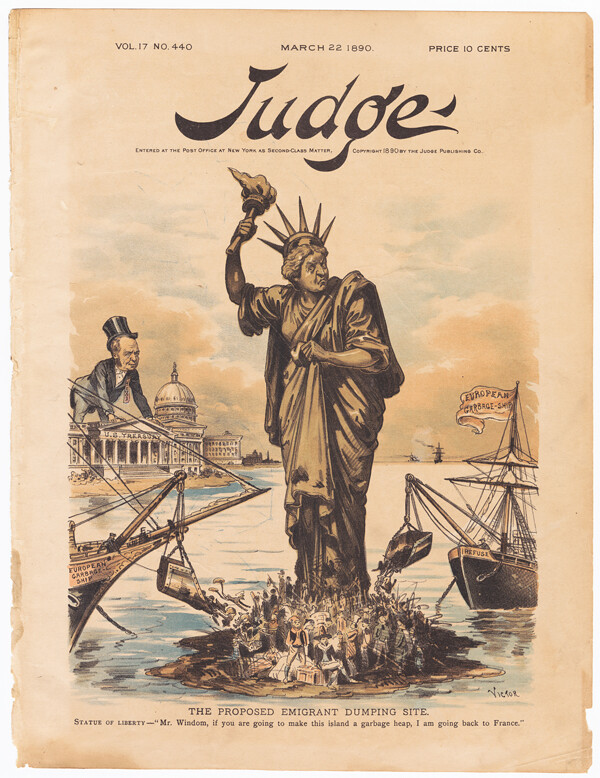

“The Proposed Emigrant Dumping Site,” cover image of The Judge 17, no. 440 (March 22, 1890).
In 1883, Emma Lazarus, a young leftist Sephardic intellectual and Zionist of Portuguese descent, who assisted refugees and advocated for greater acceptance of Russian Jews fleeing pogroms,55 composed her Petrarchan sonnet “The New Colossus” to help with the flagging fundraising efforts for the statue’s pedestal in the US, describing the allegory to come as
A mighty woman with a torch, whose flame
Is the imprisoned lightning, and her name
Mother of Exiles. From her beacon-hand
Glows world-wide welcome; her mild eyes command
The air-bridged harbor that twin cities frame.56
In Send These to Me: Immigrants in Urban America, historian John Higham demonstrates that Lazarus’s was a marginal view, entirely absent from the Statue’s inaugural rhetoric, which instead focused on the beneficent effect of American ideals on the rest of the globe, and the desirability of international friendship in a moment of swelling anti-immigrant sentiment. A bronze plaque containing the text of Lazarus’s sonnet was placed without ceremony on the Statue’s interior wall in 1903 due to the singular efforts of Georgina Schuyler, whom Higham describes affectionately as “another shy, poetry-loving spinster who belonged to the old New York aristocracy.”57 The poem’s interpretation of the Statue as a welcome to foreigners was not to be yoked to the monument in official discourse until the immigrants who arrived before the restrictive covenants of 1924 began to be Americanized through textbook interpretations of the sculpture aimed at the groups’ assimilation. With the Immigration Act of 1924, an outgrowth of the 1907 Dillingham Commission which is now receiving a revival in the aims of the Trump administration’s RAISE Act, quotas were imposed on immigrants according to their national origins, excluding Asians altogether and limiting visas for others to two percent of the total number of people of each nationality in the United States as of the 1890 national census.58 This policy increased the percentage of visas available to individuals from the British Isles and Western Europe, but severely limited immigration from “undesirable” areas like Southern and Eastern Europe. Since borders were being clamped down, the role of Ellis Island shifted sharply, and it was transformed from a processing facility (a task now to be accomplished by consulates) to a detention and deportation facility. Ironically (or aptly), this was the year that the Statue of Liberty was declared a national monument. A boost to Lazarus’s sentiments came when anti-racism (and in particular the resistance to anti-Semitism) became part of the US nationalist mobilization against Nazi Germany in the late 1930s: Schuyler’s plaque of “The New Colossus” was finally moved to the Statue’s entrance in 1945.
Questioning of the poem’s relevance to the Statue has been spreading in the discourse of twenty-first-century white supremacists, continuing the tradition of interpretation that reverses the role of Liberty’s torch—reading the colossus as a beacon to other nations and an admonition of American ideological supremacy. “The claim that America was to welcome ‘the wretched refuse of your teeming shore’ is a Jewish demand upon America, and not the original intention of the Statue of Liberty,” wrote Klan icon David Duke in 2012,59 while on January 28, 2017, white nationalist Richard Spencer tweeted, “It’s offensive that such a beautiful, inspiring statue was ever associated with ugliness, weakness, and deformity.” At a briefing regarding the RAISE Act, which intends to severely limit immigration to the United States by privileging those with English proficiency and other advanced skills, White House Senior Policy Advisor Stephen Miller rebuked the invocation of the Statue as Mother of Exiles by CNN reporter Jim Acosta, who cited Lazarus when stating that the policy proposal countered a US tradition of welcoming the tired, poor “huddled masses yearning to breathe free.” “The Statue of Liberty is a symbol of American liberty lighting the world,” Miller replied; “The poem that you’re referring to was added later [and] is not actually part of the original Statue of Liberty.”60 The eclipsed history in these pages brings out the unfortunate truth in this statement, which nevertheless disavows altogether the transnational and immigrant-driven sourcing of the Liberty in question. The contemporary fiction of the United States as melting pot concocts a figure of Liberty that is contained by the ideal sculpture’s copper skin, imagining Liberty’s forge as operative only upon its own sanctioned citizens. We now have to ask: where did the tailings of this Liberty end up? Clark, Michigan? Corocoro, Bolivia? Nizhny Tagil, Russia? This unanswerable query obliges us to confront a spectral and abject form of smelted citizenship, leaching and offgassing into territories beyond Liberty’s mild gaze, on the move, and without a trace.
My thanks to Sean Gohman and William Rose of Michigan Tech and Tom Wright of the Quincy Mine and Hoist Association for their generosity in abetting my fieldwork in the Keweenaw Peninsula; to Marina Resende Santos for research assistance; and to Joshua G. Stein for his readings of this essay in draft form. According to Walter Dennis Gray, Laboulaye was in fact the first French academic to teach American history. Walter Dennis Gray, Interpreting American Democracy in France: The Career of Édouard Laboulaye, 1811-1883 (University of Delaware Press, 1994), 55-72.
See Stephen W. Sawyer, “Édouard Laboulaye and the Statue of Liberty: Forging the Democratic Experience,” The Letter of the Collège de France 4 (2008–09): 55–56. For more on Laboulaye, see Walter Dennis Gray, Interpreting American Democracy in France: The Career of Édouard Laboulaye, 1811-1883 (University of Delaware Press, 1994).
These developments are carefully laid out in Chapter 8 of Yasmin Sabina Khan, Enlightening the World: The Creation of the Statue of Liberty (Ithaca, NY: Cornell University Press, 2010), 117-32.
Qtd. in Frédéric Auguste Bartholdi, The Statue of Liberty Enlightening the World, Described by the Sculptor. Published for the Benefit of the Pedestal Fund. (New York: North American Review, 1885), 53, ➝, and in YA Pamphlet Collection (Library of Congress) DLC, An Appeal to the People of the United States, in Behalf of the Great Statue, Liberty Enlightening the World (New York: s.n., 1884), 2, ➝.
Frontispiece to Frédéric Auguste Bartholdi, The Statue of Liberty Enlightening the World, Described by the Sculptor. Published for the Benefit of the Pedestal Fund. (New York: North American Review, 1885), ➝.
William Clark D.D., D.C.L., ed., Empire Club Speeches; Being Addresses Delivered before the Empire Club of Canada During its Session of 1903-04 (Toronto: William Briggs, 1904), 94.
Tung-Hui Hu, A Prehistory of the Cloud (Cambridge and London: MIT Press, 2015), xiii.
Edmond de Goncourt and Jules de Goncourt, The Goncourt Journals, 1851-1870, trans. Lewis Galantière (Garden City, NY: Doubleday, Doran, 1937), letter of May 27, 1867.
For the role of photography in creation of the statue see Luce Lebart and Sam Stourdze, Lady Liberty (Paris: Le Seuil, 2016), and a review of the accompanying show, Sarah Moroz, “How Photography Helped Build the Statue of Liberty,” New York Times: Lens Blog, ➝.
“Let us respond in like manner. Let us not wait for the millionaires to give us this money.” Joseph Pulitzer, “The Unfinished Pedestal: What Shall Be Done with the Great Bartholdi Statue?,” New York World, March 16, 1885.
See Jean-Marie Welter, “Understanding the Copper of the Statue of Liberty,” JOM; New York 58, no. 5 (May 2006): 30–33. As will be reinforced later, the amount of confusion surrounding the copper used in the Statue is substantial. Khan’s account, by far one of the most thorough, names as the benefactor Japy Fréres, a French metal manufacturer that owned a mine at Vigsnes, in Norway.
See Eugène-Emmanuel Viollet-le-Duc, Entretiens sur l’architecture (Paris: A. Morel & Cie Éditeurs, 1863), ➝.
From his speech to the Franco-American Union at the Hôtel du Louvre of November 6, 1875: Édouard Laboulaye, Derniers discours populaires de Édouard Laboulaye (Paris: G. Charpentier et cie., 1886), 226.
Useful and highly accessible sources for understanding the byproducts of smelting appear in Bill Carter, Boom, Bust, Boom: A Story about Copper, the Metal That Runs the World (Tucson: Schaffner Press, Incorporated, 2014), Timothy J. LeCain, Mass Destruction: The Men and Giant Mines That Wired America and Scarred the Planet (New Brunswick, NJ: Rutgers University Press, 2009), and (specifically on ASARCO) Lin Nelson and Anne Fischel, “Public Health and Environment,” Their Mines, Our Stories, accessed December 20, 2017, ➝.
The story goes so far as to suggest that the lack of evidence for Nizhny Tagil’s role points to masonic involvement in the Statue’s facture (as secret societies were prohibited in Russia at the time). See Olga Zaikina, “Mining Lady Liberty’s Russian Lineage,” Hyperallergic, March 6, 2015, ➝. This article covers an exhibition called Skin of Liberty: Fractured and re-Structured, which brings artists from Brooklyn and Russia’s Ural region together to reflect on myths surrounding industrialization in the two cities.
Secrétan eventually owned a copper syndicate whose members included the powerful companies Rio Tinto, Anaconda, and Calumet & Hecla, all of whom became notorious for their harsh treatment of a sporadically restless and activist labor force.
Jean-Marie Welter, “Understanding the Copper of the Statue of Liberty,” JOM: A Publication of the Minerals, Metals, & Materials Society 58, no. 5 (May 2006): 30–33.
James Brooke, “Wealth of Mine Barons Turns to Dust at Source,” The New York Times, November 4, 1997, sec. U.S., ➝.
Eduardo Galeano, Open Veins of Latin America: Five Centuries of the Pillage of a Continent, trans. Cedric Belfrage (New York: Monthly Review Press, 1997), 134.
Qtd. in Alan M. Kraut, “Lady in the Harbor: The Statue of Liberty as American Icon,” in Margaret Salazar-Porzio, Joan Troyano, and Lauren Safranek, eds., Many Voices, One Nation: Material Culture Reflections on Race and Migration in the United States (Washington, D.C: Smithsonian Institution Scholarly Press, 2017), 127. Kraut also cites African American periodicals such as the Chicago Defender who continued to point out the Statue’s use in the service of “‘Liberty, Protection, Opportunity, Happiness, for All White Men’ and ‘Humiliation, Segregation, Lynching, for All Black Men.’”
See for instance United States Centennial Commission, International Exhibition, 1876, Official Catalogue. Part III: Machinery Hall, Annexes, and Special Buildings. Department V. Machinery, 2nd ed. (Philadelphia: Centennial catalogue Company/John R. Nagle & Company, 1876), 6.
➝.
The financial responsibility proposal issued by the administration of President Barack Obama would have required companies mining metals such as gold, silver, copper and lead to show they had the financial means to clean up their sites once they finish mining by issuing bonds or buying insurance. It was aimed at taking the burden off of taxpayers to assume the cost of cleanup for sites when mines declare bankruptcy. See “EPA Passes on Rule Covering U.S. Hardrock Miners’ Cleanup Costs,” Reuters, December 2, 2017, ➝. See also Susan Dunlap, “Butte, Anaconda Bracing for Stripped-down EPA, Superfund,” Montana Standard, June 25, 2017, ➝.
The “Chicago Boys” were Latin American economists who held positions of power during the military dictatorship of Pinochet, named as such because they were either trained or influenced by University of Chicago theorists and proponents of free-market capitalism Milton Friedman and Arnold Harberger.
Qtd. in Neil Levine, The Architecture of Frank Lloyd Wright (Princeton: Princeton University Press, 1996), 318.
Text of a 1925 letter to client Gordon Strong, qtd. in Levine, The Architecture of Frank Lloyd Wright, 302. See also pp. 351-55.
See Nico Israel, Spirals: The Whirled Image in Twentieth-Century Literature and Art (Columbia University Press, 2015), 28-31. See also Peter Sloterdijk, Globes: Spheres, Volume 2: Macrospherology (Cambridge, MA: Semiotext(e)/MIT Press, 2014).
Dante Alighieri, Inferno 32.73-74, my translation. Los Angeles-based Chilean artist Ignacio Perez Meruane expresses the same intuition in Circuitos, a project entailing a spiral shelving system at the Galeria Tajamar in Santiago juxtaposing postcard views of the Guggenheim and Chuquicamata Mine, as well as copper bowls and verdigris-pigmented spiral paintings “to evoke copper’s extraction from the earth and subsequent movement as a material export, and the way in which the industrial use of the copper for the movement and transference of electricity, gas, liquids, and information, echoes the materials’ own movement across the globe.” See the press release at Ignacio Perez Meruane, “Circuitos,” Ignacio Perez Meruane, May 29, 2015, ➝. Ignacio Acosta also suggests a link, albeit in passing, describing the museum and the corporate town of Chuquicamata as “post-industrial archaeologies that resist forgiving their history of exploitation.” See Ignacio Acosta, “Urban Gating in Chile: Chuquicamata—a Corporate Mining Town: ‘Bounded Territory within a Territory,’” in Beyond Gated Communities, Ed. Samer Bagaeen and Ola Uduku (New York: Routledge, 2015), 234.
An exhaustive account of the Guggenheim empire and its branches would be impossible to include here. For a useful chart of the genealogy of their mining and smelting interests in 1910, see John H. Davis, The Guggenheims: An American Epic, 1st ed. (New York: Morrow, 1978), 94, and the following chapter, “Lords of the Earth (1905-1923): Building the Guggenheim Empire,” 95-134. Another accessibly narrated history appears in Debi Unger and Irwin Unger, The Guggenheims: A Family History (New York: Harper Collins, 2009); see especially pp. 69-99.
See Isaac Frederick Marcosson, Metal Magic: The Story of the American Smelting & Refining Company. (New York: Farrar, Straus, Giroux, 1949), 86-91. See also Leonard J. Arrington and Gary B. Hansen, The Richest Hole on Earth: A History of the Bingham Copper Mine (Logan, UT: Utah State University Press, 1963). On the 1912 Bingham strike, which featured an unusual prominence of rank and file immigrant workers protesting both against immigrant elites or “padrones” and would-be union leaders of the Western Federation of Miners, see Gunther Peck, “Padrones and Protest: ‘Old’ Radicals and ‘New’ Immigrants in Bingham, Utah, 1905-1912,” The Western Historical Quarterly 24, no. 2 (1993): 157–78.
Graham Bowley, “The Guggenheim Connection,” New York Times, September 17, 2011, ➝.
For a reading of open pit mining as a symbol of the ultimate pretension of technology’s ability to overcome all natural limits see Timothy J. LeCain, Mass Destruction: The Men and Giant Mines That Wired America and Scarred the Planet (New Brunswick, N.J.: Rutgers University Press, 2009). The quote hails from LeCain, 119.
Frank Lloyd Wright, The Japanese Print: An Interpretation (New York: Horizon Press, 1967), 16.
Levine, The Architecture of Frank Lloyd Wright, 299. See Hilla Rebay, Solomon R. Guggenheim Collection of Non-Objective Paintings (Charleston, SC: Carolina Art Association, 1936), 12.
Qtd. in Levine 346. Rebay thought red too “materialistic,” as Levine points out on 328.
Immanuel Kant, Critique of Pure Reason, trans. Paul Guyer and Allen Wood (Cambridge: Cambridge University Press, 1998), 398. I am citing a translation modified by John Hamilton in an unpublished conference paper to which I was respondent: John Hamilton, “Burrowers, Builders, and the Principle of Insufficient Reason” (Habitation: Literature and Architecture, University of Chicago, 2016).
Saskia Sassen, “The Global City: Introducing a Concept,” Brown Journal of World Affairs 11, no. 2 (Winter/Spring 2005): 39.
This situation was rectified with the nationalization of subsoil rights in 1917. See Monica Perales, Smeltertown: Making and Remembering a Southwest Border Community, ed. William P. Clements Center for Southwest Studies and Monica Perales (Chapel Hill: University of North Carolina Press, 2010), 35.
Villa worked at ASARCO’s Smeltertown plant; and in January 1916, sixteen ASARCO employees were killed brutally by Villa’s men near the town of Santa Isabel, an incident that sparked the U.S. Army’s attempt to capture Villa. On Villa’s paradoxical collaboration with ASARCO see William K. Meyers, “Pancho Villa and the Multinationals: United States Mining Interests in Villista Mexico, 1913–1915,” Journal of Latin American Studies 23, no. 2 (May 1991): 346.
A.W. Allen, “The Chuquicamata Enterprise—III,” Mining and Scientific Press 123 (July 23, 1921): 121. See, for contrast, Alejo Gutiérrez-Viñuales, “Chuquicamata: Patrimonio Industrial de La Minería Del Cobre En Chile,” Apuntes: Revista de Estudios Sobre Patrimonio Cultural—Journal of Cultural Heritage Studies 21, no. 1 (2008): 74–91.
Harry F. Guggenheim, “Building Mining Cities in South America: A Detailed Account of the Social and Industrial Benefits Flowing From the Human Engineering Work of the Chile Exploration Co. and the Braden Copper Co.,” Engineering and Mining Journal 110 (December 1920): 210.
Ibid.
Eulogio Gutiérrez and Marcial Figueroa, Chuquicamata, Su Grandeza y Sus Dolores (Santiago: Imprenta Cervantes, 1920), 10-11.
Guggenheim, “Building Mining Cities in South America,” 206.
It must be noted that a commission of government officials was sent to Chuquicamata and commented upon the deplorable and unhygienic qualities of the encampments, including the New Camp, which they judged to be “el más antihigiénico, insalubre e inadecuado de ver,” lacking water, electricity, and sewage, since the bathrooms were distant from the homes. See Elena Mayorga Marnich, “Sueño de una integración patrimonial o el traslado de Chuquicamata a Calama,” Urbano 7, no. 10 (November 2004): 5. An analogy would be Fordlândia, Henry Ford’s would-be civilizing mission and rubber plantation in the Amazon jungle, recently engaged by Brazilian artist Clarissa Tossin in Fordlândia Fieldwork (double-sided inkjet prints on paper, 2012).
Rivera’s immersive installation based on Chuquicamata’s disruptive impacts, The Andes Inverted, was on display at the Museum of Fine Arts Boston from March 2017 through February 2018. See documentation at Rivera, “The Andes Inverted,” DANIELA RIVERA, ➝.
For more on the hard-won environmental policy change in Chile, and the gains for regulation of Chuquicamata, see José Carlos Orihuela, “The Environmental Rules of Economic Development: Governing Air Pollution from Smelters in Chuquicamata and La Oroya,” Journal of Latin American Studies 46, no. 1 (2014): 151–183.
“Cobre Rojo,” in Juan de Dios Reyes Franzani, Salitre: Poesía Joven del Norte (Antofagasta, Chile: Universidad del Norte, 1973), 6.
Marshall McLuhan, Understanding Media: The Extensions of Man (New York: Gingko Press, 2013). eBook Academic Collection (EBSCOhost), EBSCOhost.
For a reading of Chuquicamata as an example of urban gating under transnational capital, see Ignacio Acosta, “Urban Gating in Chile: Chuquicamata—a Corporate Mining Town: ‘Bounded Territory within a Territory,’” in Beyond Gated Communities, Ed. Samer Bagaeen and Ola Uduku (New York: Routledge, 2015), 227–39.
For background, see Howard Jay Graham, Everyman’s Constitution: Historical Essays on the Fourteenth Amendment, the “Conspiracy Theory,” and American Constitutionalism (Madison: State Historical Society of Wisconsin, 1968). I have written more extensively about this issue in Jennifer Scappettone, “I 0we v. I/O: Poetics of Veil-Piercing on a Corporate Planet,” Jacket2, December 14, 2016, ➝.
He went on to say, “It is no longer possible to adopt the aloof and dissociated role of the literate Westerner.” McLuhan, Understanding Media.
See the National Park Service’s account of the Statue’s links to abolition at National Park Service/U.S. Department of the Interior, “Abolition - Statue Of Liberty National Monument,” U.S. National Park Service, February 26, 2015, ➝.
Links in the chain were stolen from Vō’s installation of We the People (detail) between New York’s City Hall and Brooklyn Bridge Park in 2014, furthering the dispersion.
See Esther H. Schor, Emma Lazarus (New York: Knopf, 2017).
Heinrich Edward Jacobs, “The New Colossus,” in The World of Emma Lazarus (New York: Schocken Books, 1949), 178.
John Higham, “The Transformation of the Statue of Liberty,” in Send These to Me: Immigrants in Urban America (Baltimore: Johns Hopkins University Press, 1984), 80. Higham provides details surrounding the rhetoric of the statue’s unveiling on 81.
See United States Department of State, “Milestones: 1921–1936: The Immigration Act of 1924 (The Johnson-Reed Act),” Office of the Historian, ➝. Note that this website, “Milestones in the History of U.S. Foreign Relations,” has been retired under the Trump administration.
See Hillel Italie, “Miller Comments on Lazarus Poem Echo Far-Right Opinions,” Associated Press News, August 3, 2017, ➝.
“Acosta’s Full Exchange with Stephen Miller,” CNN Video, August 2, 2017, ➝.
Dimensions of Citizenship is a collaboration between e-flux Architecture and the United States Pavilion of the 16th International Architecture Exhibition at La Biennale di Venezia.
Category
Subject
Dimensions of Citizenship is a collaboration between the United States Pavilion at the 2018 Venice Architecture Biennale and e-flux Architecture.
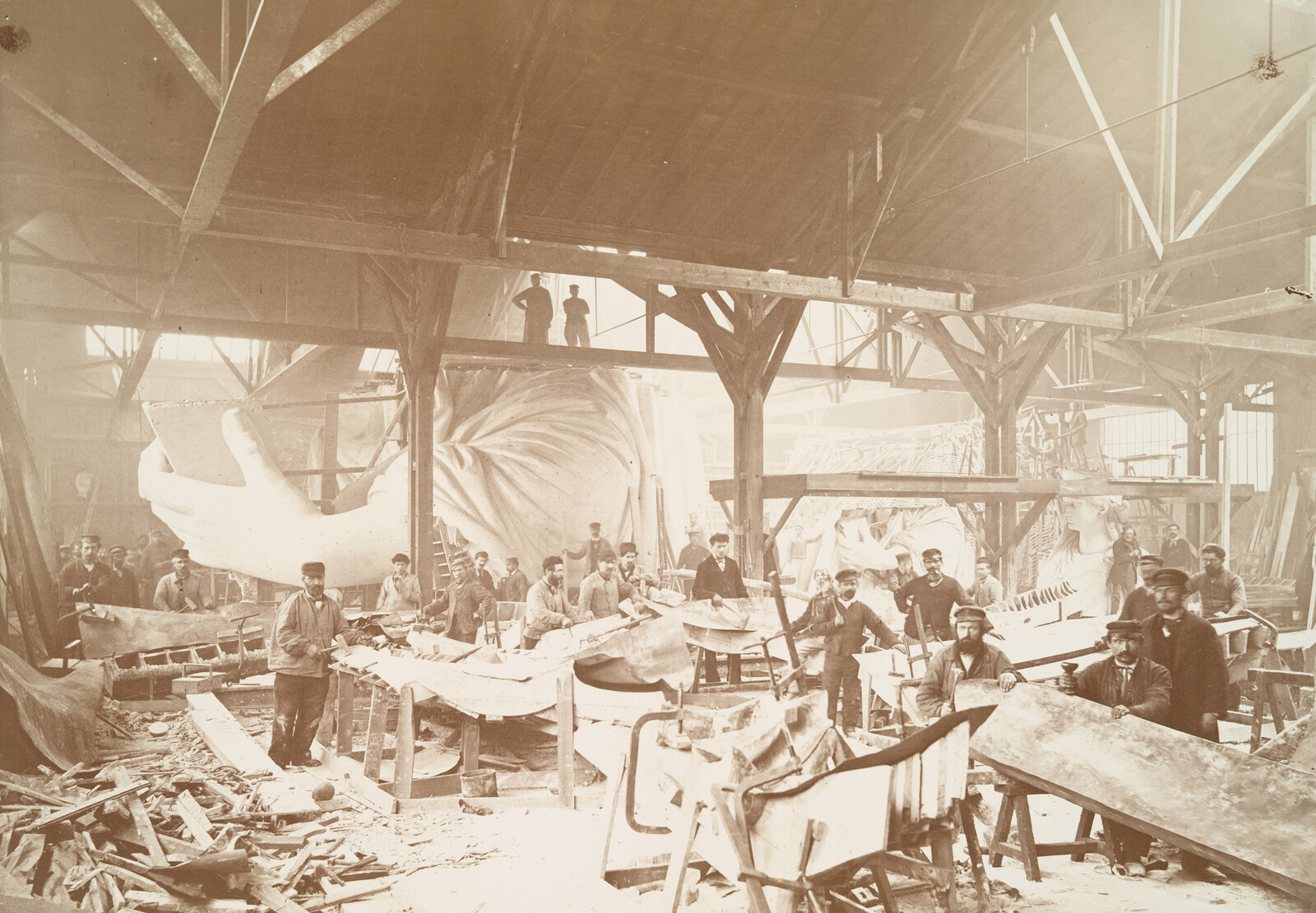
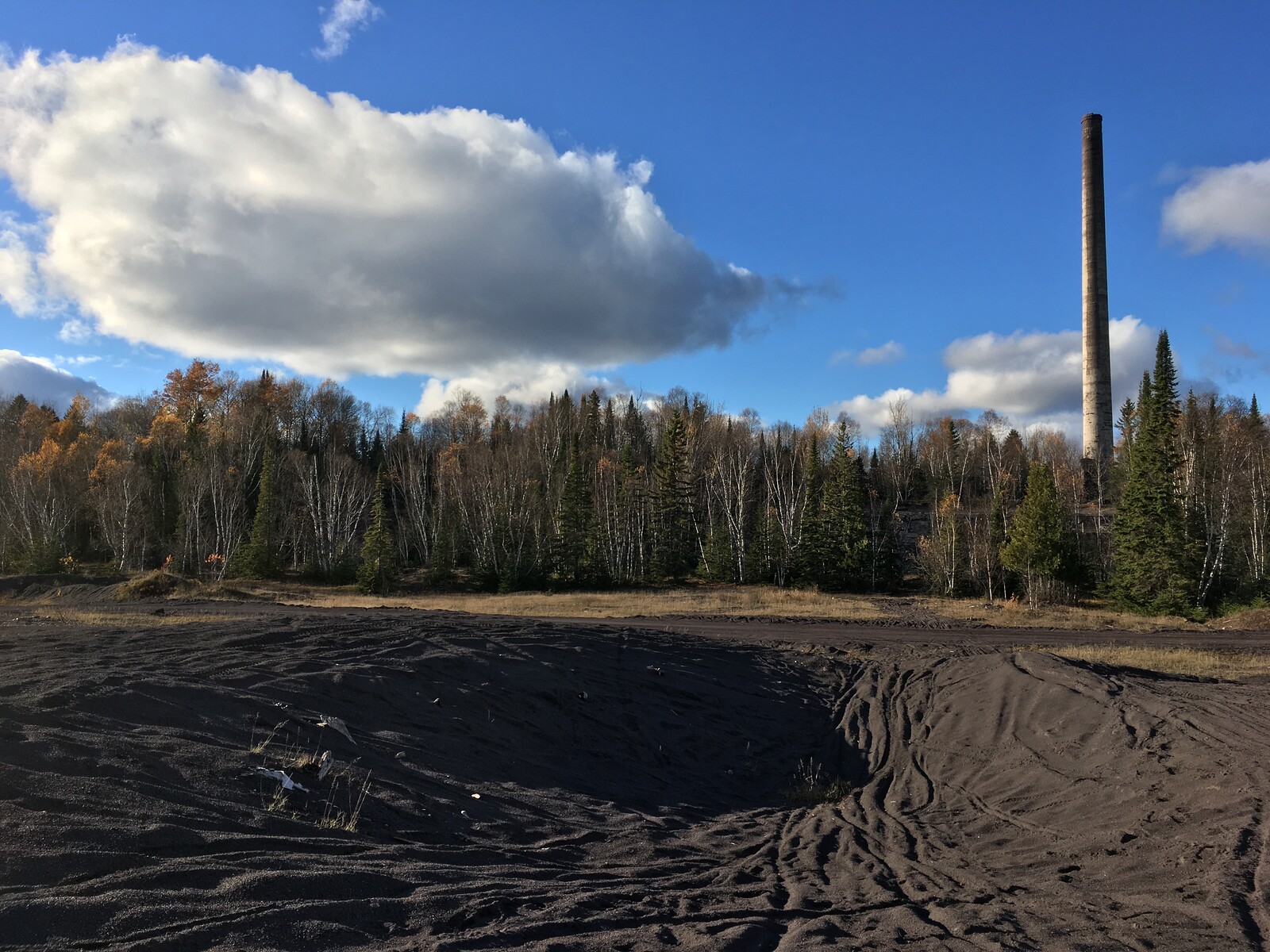



.jpg,1600)

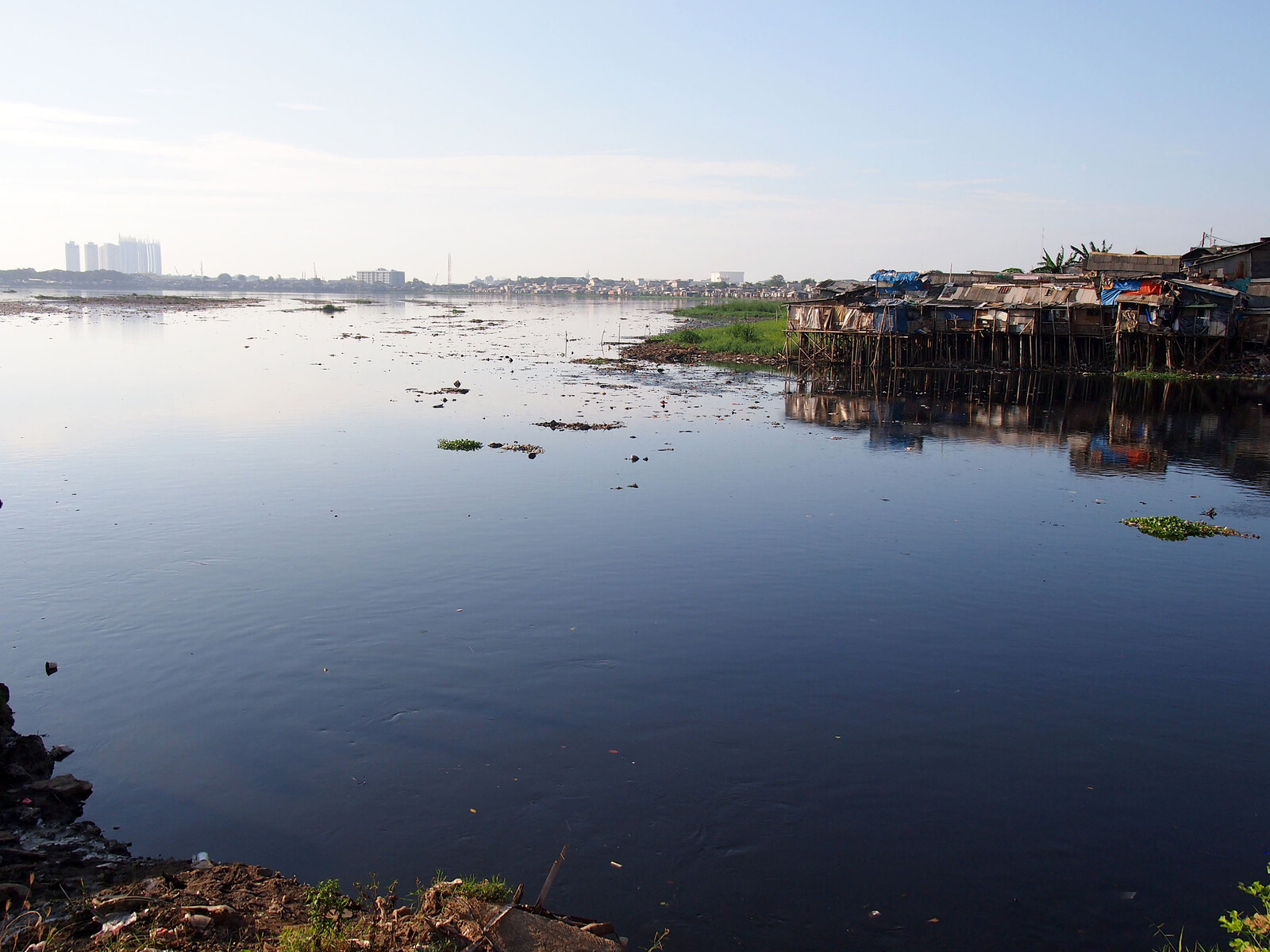
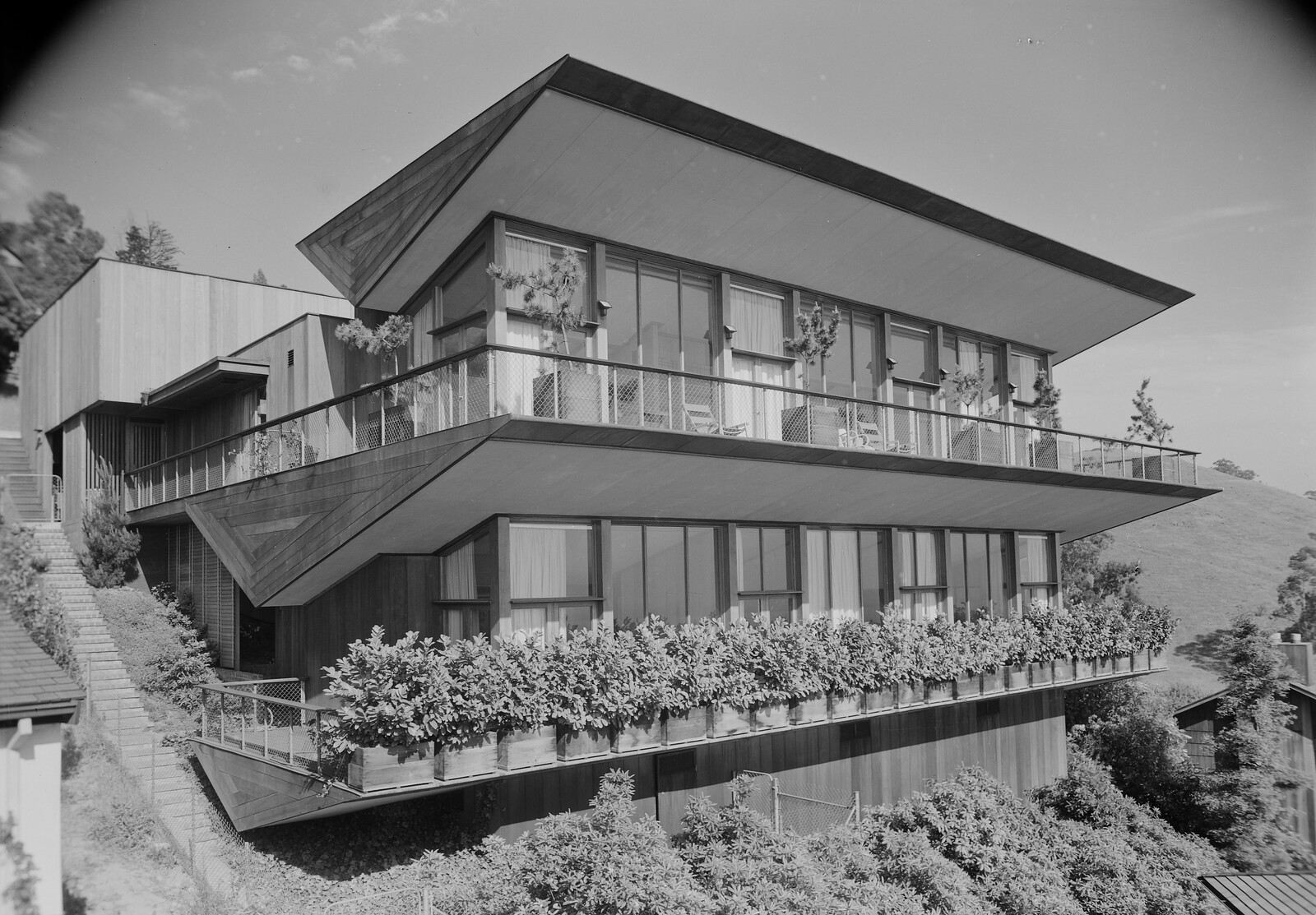
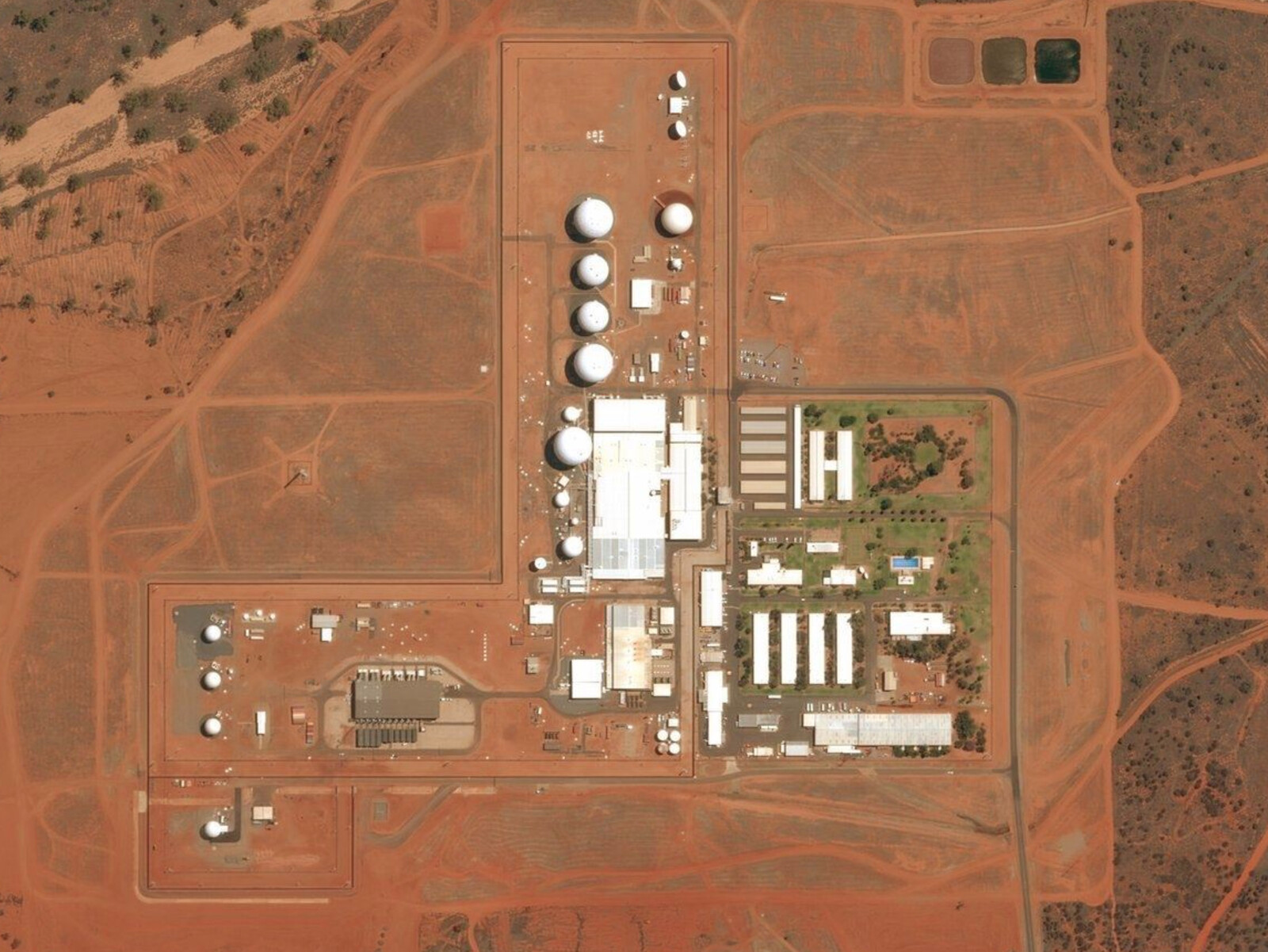

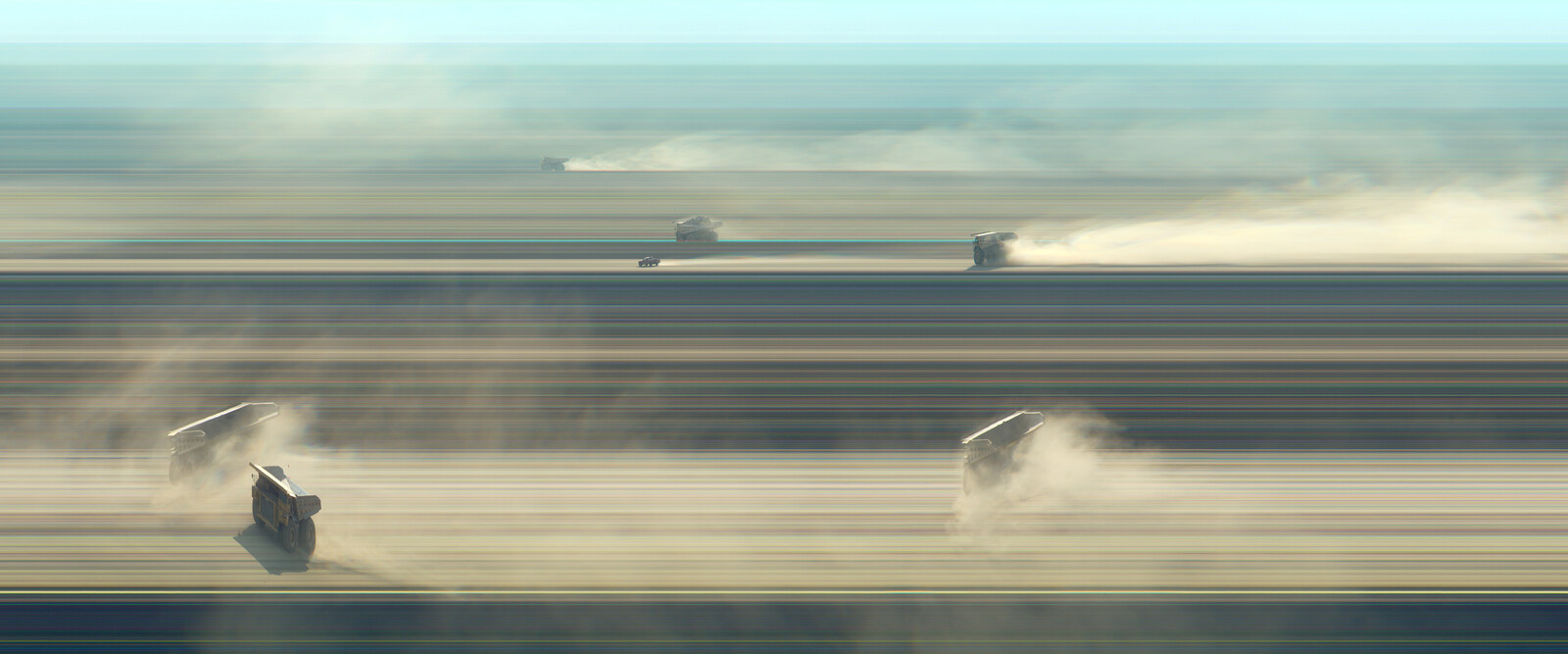
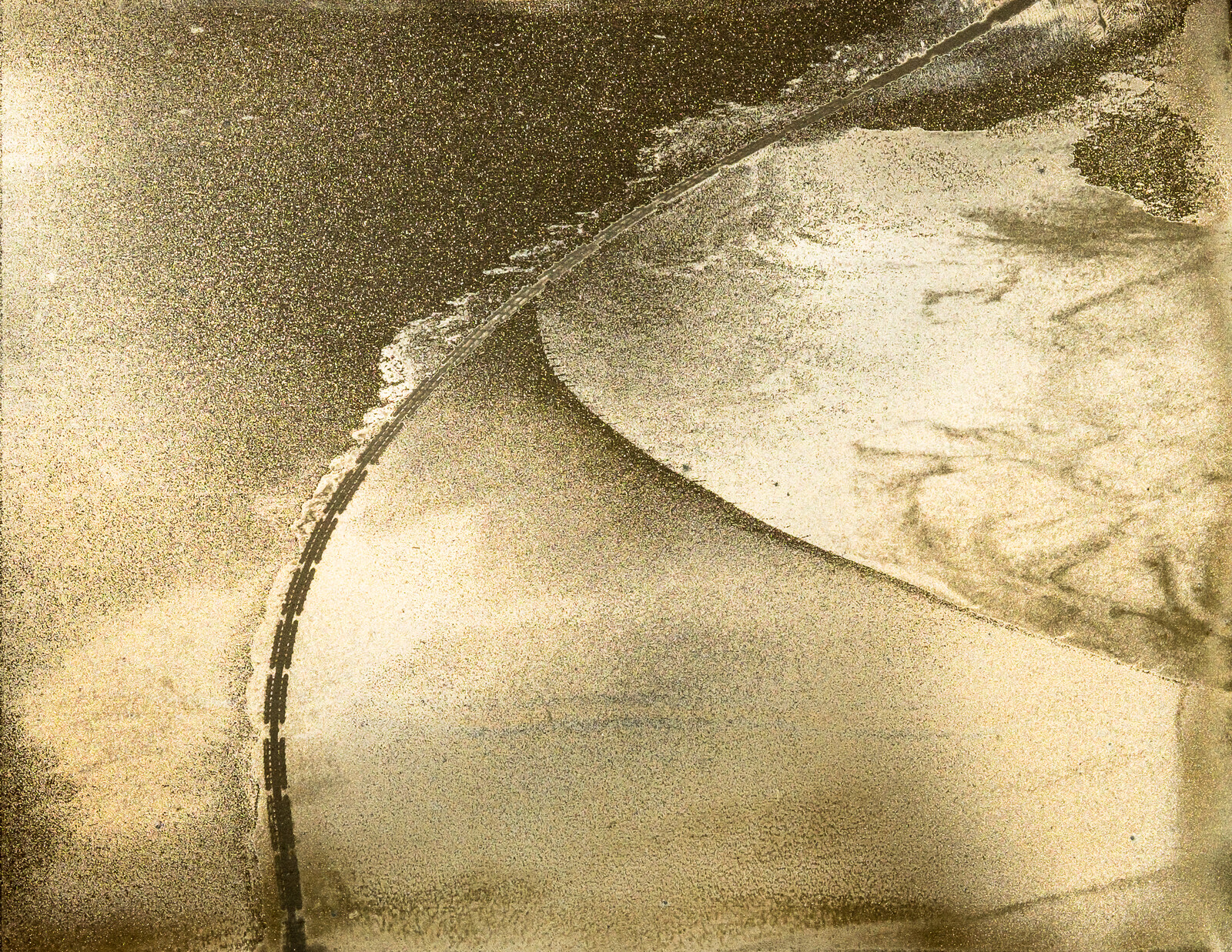
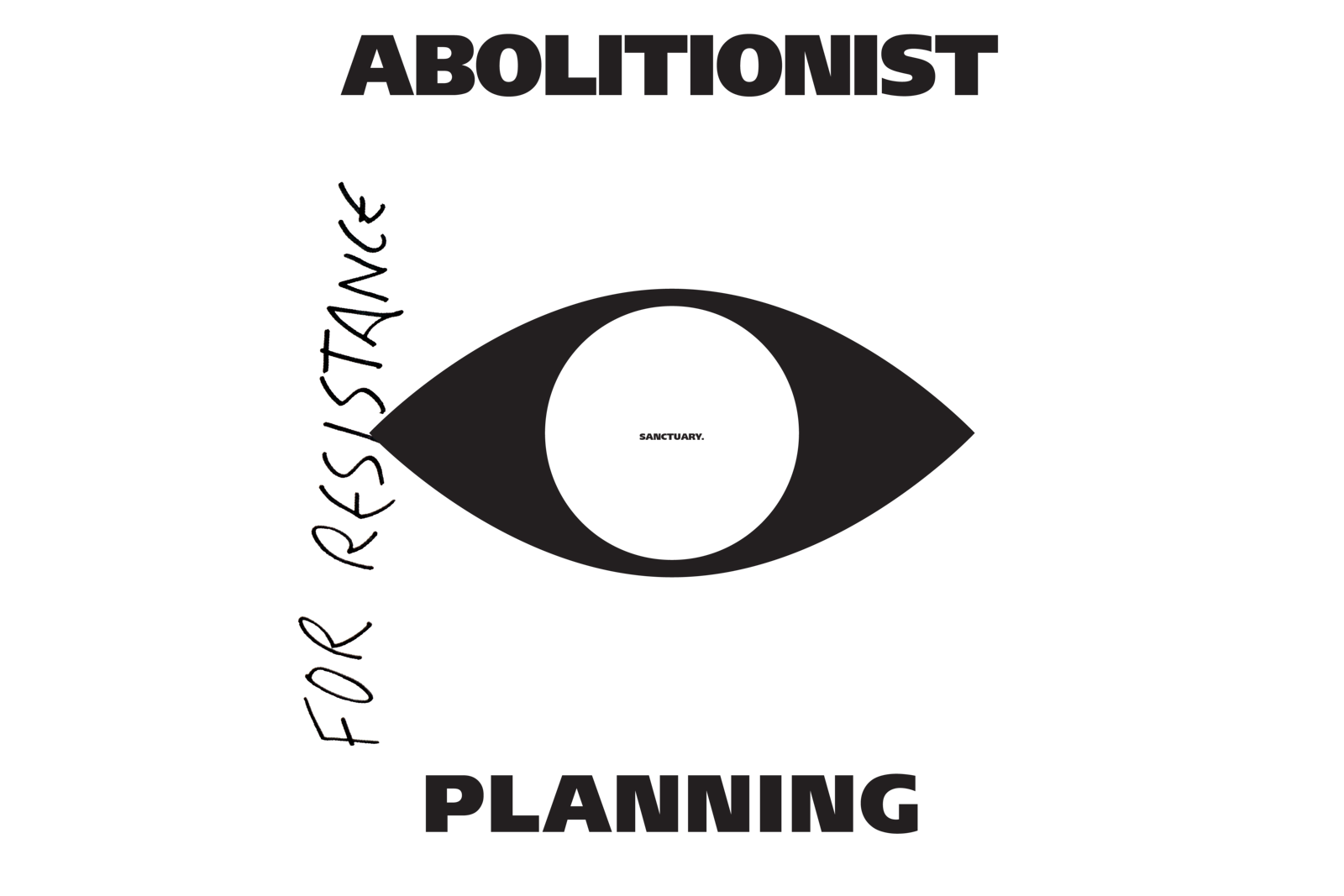
.png,1600)
